21st-Century Learning: What It Is and Why It’s Important
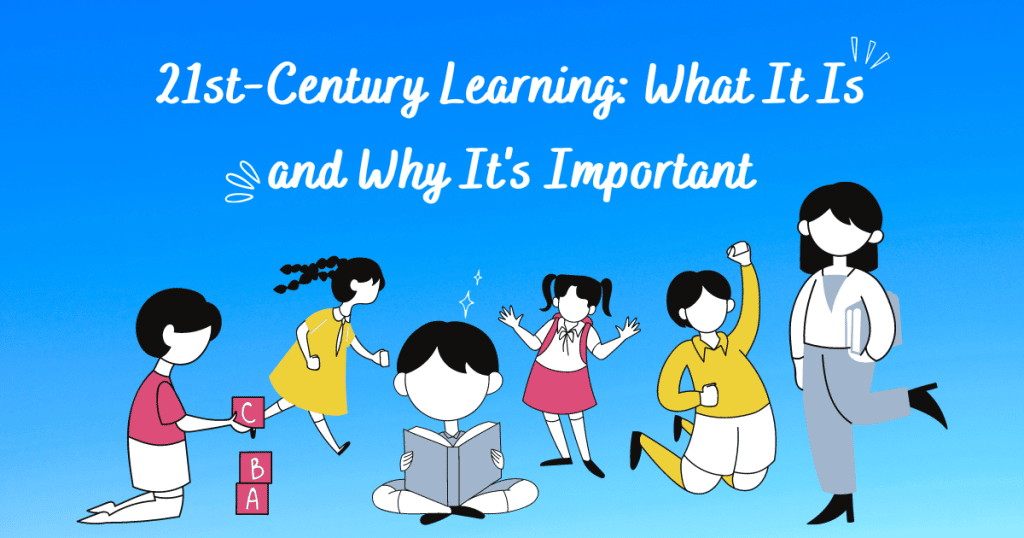
21st-century learning is a term used to describe a shift in education from the traditional methods of the past to a more modern approach. This new approach focuses on preparing students for the future by teaching them the skills they need to be successful in a global economy. 21st-century learning is not memorization or recitation but critical thinking, creativity, and collaboration. It is about preparing students for the real world, not just for a test.
Table of Contents

Introduction
It is becoming increasingly clear that 21st-century learning is essential for students to be successful in an ever-changing global economy. 21st-century learning is not simply an update to traditional education; it is a fundamental shift in how we think about and prepare students for their future.
21st-century learning is more than just the 3Rs (reading, writing, and arithmetic). It emphasizes the importance of critical thinking, creativity, collaboration, and communication – skills essential for students to thrive in the 21st century.
What is also clear is that 21st-century learning cannot occur in a traditional classroom setting. Students need to be actively engaged in their learning and have opportunities to apply what they are learning to real-world situations.
There are several ways that schools can incorporate 21st-century learning into their curriculum. One way to integrate 21st-century learning into the classroom is to focus on project-based learning. In project-based learning, students work on a project together. They use their creativity and critical thinking skills to solve problems. This type of learning is effective because it helps students learn how to work together and think critically.
Another way to incorporate 21st-century learning is to use technology in the classroom. Technology can facilitate collaboration and communication and provide students with opportunities to be creative and think critically.
The bottom line is that 21st-century learning is essential for students to be successful in the 21st century. It is about much more than just the 3Rs and cannot occur in a traditional classroom setting. Schools need to be creative in incorporating 21st-century learning into their curriculum.
21st-Century Skills Students Need for Learning
As the world changes, so do students’ skills to succeed. Here are 21st-century skills students need for learning:
- Communication: Good communication skills are essential for students to work together and share their ideas.
- Critical Thinking: The student needs to be able to think critically to analyze information and solve problems.
- Collaboration: One must work effectively with others to achieve a common goal.
- Creativity: Students need to think creatively to generate new ideas and solve problems innovatively.
- Digital Literacy: Students must use technology effectively to access and create digital information.
- Information Literacy: They must find, evaluate, and use information effectively.
- Media Literacy: Students must critically analyze media messages to understand their impact on individuals and society. This critical analysis will help them understand how media messages can influence individuals and society.
- Problem-Solving: Students must identify and solve problems to improve their learning.
- Self-Management: Students need to be able to manage their learning to be successful independent learners.
- Social and Cultural Awareness: Students need to be aware of the influence of social and cultural factors on their learning.
- Technological Literacy: Students must use technology effectively to access and create digital information.
- Flexibility and Adaptability: Students need to be able to adapt their learning to new situations and technologies.
- Initiative and Self-Direction: Students need to take the initiative and be self-directed in their learning to be successful.
- Productivity and Accountability: They must be productive and take responsibility for their learning.
- Leadership: The students must take the lead in their education and motivate others to join them in learning.
- Social Responsibility: Students must be aware of how their learning affects those around them and be respectful of others while learning.
- Sustainability: It is essential for students to be aware of the impact their learning can have on the environment and to be considerate of environmental sustainability when they are learning.
- Ethical Responsibility: Students need to be aware of the ethical implications of their learning and consider ethical responsibility in their learning.
- Global Perspective: It is essential for students to be aware of the global context of their learning and to be considerate of international perspectives in their learning.
- Cultural Competence: It is vital for students to be aware of the influence of culture on their learning and to be competent in cross-cultural communication.
- Diversity: Students need to be aware of the diversity of perspectives and experiences in the world and be respectful of diversity in their learning.
These are just some skills students need to learn in the 21st century. As the world changes, so do students’ skills to succeed. Educators must stay up-to-date on the latest research and trends to prepare their students for the future.
The Importance of 21st-Century Learning
Here are just a few of the reasons why 21st-century learning is so important:
1. It helps students develop the skills they need for the real world.
In the 21st century, employers are looking for workers who are not only knowledgeable but also adaptable, creative, and able to work collaboratively. 21st-century learning helps students develop these essential skills.
2. It prepares students for an increasingly globalized world.
In today’s world, it’s more important than ever for students to be able to communicate and work with people from other cultures. 21st-century learning helps students develop the global perspective they need to be successful in an increasingly connected world.
3. It helps students learn how to learn.
In a world where information is constantly changing, students need to be able to learn new things quickly and effectively. 21st-century learning helps students develop the metacognitive skills they need to be lifelong learners.
4. It helps students develop a love of learning.
21st-century learning is hands-on, interactive, and engaging. This helps students develop a love of learning that will stay with them throughout their lives.
5. It’s more relevant to students’ lives.
21st-century learning is relevant to students’ lives and the world they live in. It’s not just about memorizing facts but about developing the skills, students need to be successful in their personal and professional lives.
The importance of 21st-century learning cannot be overstated. In a constantly changing world, it’s more important than ever for students to develop the skills they need to be successful.
The Challenges of 21st-Century Learning
In the 21st century, learning is becoming increasingly complex and challenging. With the rapid pace of change in the world, it is difficult for students to keep up with the latest information and skills. In addition, they must also be able to apply what they have learned to real-world situations.
The following are some of the challenges of 21st-century learning:
1. The pace of change is accelerating.
In the past, knowledge and skills were acquired slowly over time. However, in the 21st century, the pace of change is much faster, meaning students must learn more quickly to keep up with the latest information.
2. The world is becoming more complex.
As the world becomes more complex and interconnected, students must be able to understand and navigate complex systems. They must also be able to think critically and solve problems.
3. Students must be able to apply what they have learned.
In the past, students were often tested on their ability to remember and regurgitate information. However, in the 21st century, students need to be able to apply what they have learned to real-world situations. This requires them to be creative and to think critically.
4. There is a greater emphasis on collaboration.
In the 21st century, there is a greater emphasis on collaboration. This means that students must be able to work effectively with others to achieve common goals. They must also be able to communicate effectively.
5. Technology is changing the way we learn.
Technology is changing the way students learn. With the advent of the internet and mobile devices, students can now access information and resources that were previously unavailable. This has changed how students learn and made it possible for students to learn anywhere and at any time.
6. Learning is no longer just about acquiring knowledge.
In the 21st century, learning is about more than just acquiring knowledge; it is also about developing skills, values, and attitudes. This means that students must be able to learn how to learn and adapt to change and different situations.
The 21st century presents many challenges for learners. However, it also provides many opportunities. With the right approach, students can overcome these challenges and be successful in the 21st century.
How Educators Can Support 21st-Century learning
There are several ways in which educators can support 21st-century learning.
First, they can create learning experiences relevant to the real world. This means incorporating problems and scenarios that students will likely encounter in their future lives and careers.
Second, educators can use technology to support 21st-century learning. Technology can be used to create engaging and interactive learning experiences, and it can also be used to provide students with access to information and resources that they would not otherwise have.
Finally, educators can model 21st-century learning for their students. This means being flexible and adaptable in their teaching and using technology and real-world examples to illustrate their points. By modeling 21st-century learning, educators can show their students that learning can be relevant, engaging, and fun.
In the 21st century, educators must be prepared to meet the challenges of an ever-changing world. By creating relevant learning experiences, using technology to support learning, and modeling 21st-century learning for their students, educators can provide students with the skills they need to be successful in the 21st century.
Final Thoughts
As educators, we must prepare our students for the 21st century. We can do this by providing opportunities for them to develop essential 21st-century skills. Project-based learning is one of the best ways to do this.
Ultimately, we must commit to giving our students the 21st-century learning they deserve. This way, they will have the tools they need to thrive in a constantly changing world. They will also have the skills they need to succeed in whatever they choose to do.
HOW TO CITE THIS ARTICLE
Llego, M. A. (2022, September 14). 21st-Century Learning: What It Is and Why It’s Important. TeacherPH. Retrieved September 14, 2022 from, https://www.teacherph.com/21st-century-learning/
- The Impact of Artificial Intelligence (AI) on the Future of Education
- How to Support LGBTQIA+ Students in the Classroom
- The Importance of Parental Involvement in Education
- Why Schools Should Encourage Parental Involvement in Education
- 50 Tips for Parents to Get More Involved in Their Child’s Education
- How to Create a Student-Centered Classroom
- Kindergarten Worksheets: Detailed Guide
- Reading Intervention Strategies for Teachers: Detailed Guide
- The Benefits of Extracurricular Activities for Students
- How to Make Learning More Relevant for Students
- Summative Assessment: A Step-by-Step Guide for Teachers
- Formative Assessment: A Step-by-Step Guide for Teachers
- Maslow’s Hierarchy of Needs and Its Application in Education
- How to Prepare Your Child for Kindergarten
- How to Develop Effective Study Habits: A Step-by-Step Guide for Students
- How to Help Students Who Struggle With Reading Comprehension
- Differentiated Instruction: A How-To Guide for Teachers
- Benefits of Inclusive Education for All Students
- How to Choose the Right Storybooks for Your Child
- The Essay Writing Process: A Step-by-Step Guide
Mark Anthony Llego
Mark Anthony Llego, a visionary from the Philippines, founded TeacherPH in October 2014 with a mission to transform the educational landscape. His platform has empowered thousands of Filipino teachers, providing them with crucial resources and a space for meaningful idea exchange, ultimately enhancing their instructional and supervisory capabilities. TeacherPH's influence extends far beyond its origins. Mark's insightful articles on education have garnered international attention, featuring on respected U.S. educational websites. Moreover, his work has become a valuable reference for researchers, contributing to the academic discourse on education.
1 thought on “21st-Century Learning: What It Is and Why It’s Important”
so informative thank you for giving me the opportunity to read your manuscripts. Worth sharing.
Leave a Comment Cancel reply
Can't find what you're looking for.
We are here to help - please use the search box below.
Want to create or adapt books like this? Learn more about how Pressbooks supports open publishing practices.
13 21st-Century Teachers and Learners – Meeting the Needs of All Learners
‘If a child can’t learn the way we teach, maybe we should teach the way they learn.” –Ignacio Estrada
Essential Questions
- What is the central goal of 21st-century learning?
- How are the skills of the 21st-century teacher different than those in times past?
- Why is it important for teachers to consider universal design when designing curriculum or lessons for all students?
- How can a teacher’s relationship with a student have a positive impact on self-concept and the future?
Introduction
There is now greater diversity than in times past, and a “one-size-fits-all” classroom is no longer appropriate. In the past, the emphasis was on the “3R’s” (reading, writing, arithmetic) as well as social studies, science and language. The model was teacher-centered with an emphasis on teaching strategies that focused on repetition, memorization, and lecturing; and tests were given at the end of the learning cycle to assess student learning. Today, curriculum developers realize the importance of developing educational goals and teaching methods that prepare students for college and future careers (Alismail & McGuire, 2015).
The Educational Landscape in the 21st Century
The term 21st-century skills encompasses a broad set of knowledge and skills that are not easy to define because the use of the term is often inconsistent, but they are generally considered to be those outlined in Figure 13.1.

21st-Century-Skills-Graphic
The 21st-century skills were developed because it is often thought that students in this century need a wide variety of skills in addition to the academic standards that have been adopted in many states. The 21st-century skills ideally work in tandem with academic or content standards and can be taught in or out of school. They also lend themselves well to an integrated curriculum, project-based learning, and authentic learning experiences. For more details about the skills, access the link above.
The Common Core State Standards (CCSS) and Partnership for 21st Century Skills integrated the framework prepared by The Partnership for 21st Century Skills. This plan advocated for the integration of core academic knowledge, critical thinking, and social skills in teaching and learning to support students in mastering the multi-dimensional abilities required in the 21st century. These skills include the “ New 3Rs ” (Relationships, Routines, and Resilience) of core academic content mastery (Cantor, 2021) and the 4Cs of Critical Thinking, Communication, Collaboration, and Creativity (Stauffer, 2021). By integrating cognitive learning and skills into the curriculum, students can gain a deeper understanding of the subject as well as ways to solve complex problems in the real world.
The Partnership for 21st Century Skills prepared educational standards for the next generation to present an appropriate strategy to apply them. The 21st-century standards:
- focus on 21st-century skills, content knowledge, and expertise
- build understanding across and among core subject areas as well as 21st-century interdisciplinary themes
- emphasize deep understanding rather than shallow knowledge.
- engage students with real-world data, tools, and experts they will encounter in college, on the job, and in life
- allow for multiple measures of mastery (Alismail & McGuire, 2015)
By adopting a 21st-century curriculum, there can be a blend of knowledge, thinking, innovation skills, media, literacy, information, and communication technology coupled with real-life experiences and authentic learning that are integrated into the academic subjects (Lombardi, 2007). The central goal for curriculum in the 21st century is a focus on the construction of knowledge that encourages students to create information that has value for them and helps them gain new skills. Developing curriculum that is based in the real world also encourages student participation and supports them in understanding the knowledge rooted in the core subjects. Additionally, this will provide students with the opportunity to develop civic, financial, environmental, and health literacies as well as global awareness.
Curriculum that emphasizes the construction of knowledge and is rooted in the core subjects is the starting point. The question becomes: how do we reach all the learners with diverse needs?
The 21st-Century Teacher
To meet the needs of learners, teachers should possess additional skills, including those of technology. Palmer (2015) describes 15 Characteristics of a 21st-Century Teacher that include: a learner-centered classroom, students as learners, users, and producers of digital content, and project-based learning. A more complete description of these skills can be found in the article: 15 Characteristics of a 21st-Century Teacher .
Universal Design for Learning
Universal Design for Learning (UDL) re-conceptualizes curriculum design by placing student diversity at the forefront and designing flexible and accommodating curriculums to meet the needs of diverse students (Strangeman, et. al, 2020). This is a relatively new approach to curriculum that is grounded in the belief that each learner is unique and brings different strengths and areas of weaknesses to the classroom (Rose and Meyer, 2002). In classrooms today, students come from diverse backgrounds, cultures, socioeconomic, and disability groups. Many traditional curriculums are designed to meet the needs of a “typical” or “average” student. This can be a significant disadvantage for students not in these categories and can lead to barriers that make access and progress more difficult.
UDL is based on the same principles as universal design in architecture which began as a movement to design structures with all users in mind and includes features like ramps and elevators to make access easier (Connell, et al., 1997). Not only does the design allow access for students with disabilities, but an unexpected side effect of this process is that it provided accessibility for all individuals, therefore, usability benefitted more people. The next step was to apply UDL to curriculum by considering the needs of all students, beginning at the planning stage. By maximizing access to information, it provided additional access to learning (Rose & Meyer, 2002).
Application of UDL during the Curriculum Design Process
Neuroscience has also contributed to the guidance of UDL in curriculum design. Research in neuroscience includes three broad neural networks in the brain that oversee three avenues of learning: UDL classifies these three avenues as recognition, strategic, and affective networks (Cytowic, 1996; Luria, 1973; Rose & Meyer, 2002). UDL stresses that these three abilities differ from student to student. As a way to meet this challenge there are three UDL principles that guide a flexible curriculum design process:
- to support recognition learning, provide multiple, flexible methods of presentation,
- to support strategic learning, provide multiple, flexible methods of expression and apprenticeship, and
- to support effective learning, provide multiple, flexible options for engagement (Rose & Meyer, 2002).
The three principles can be included in the design of goals, the inclusion of strategies and resources, flexible presentations and assessments. Using an assessment as an example, curriculum designers can include a range of media, formats, and response options so that the student’s knowledge and skills are assessed and not their ability to cope with the format and presentation. This is true for both formative and summative assessments.
Multimedia tools and peer reviews provide feedback to students that can improve their work and increase team collaboration. Technology also has the advantage of allowing students to gain information and knowledge as well as the development of different literacies even if they are working by themselves. This can encourage students to pursue individual passions for learning about specific topics that support creative thinking and innovation skills.
21st-Century Students as Consumers of Information
According to Carol Ann Tomlinson, 21st-century schools must prepare students to be wise consumers of information, and confident producers of knowledge. The 21st-century student populations are more heterogeneous than in the past, which means schools need to become more responsive to diverse cultures, languages, experiences, economics, and interests—and do this in ways that provide equity of access to dynamic learning experiences to meet the needs of all learners.
Current research suggests that the best vision of a 21st-century classroom is centered on the learners, knowledge, assessment, instruction, and the classroom community (National Research Council, 2000). Technology, when used effectively, can support teachers and students in a variety of ways, including curriculum planning, differentiated learning opportunities, assessment development and meeting the needs of a diverse student population.
There is agreement among educators and the public that we must establish certain “core skills” that should be included in this framework (Binkley, et al, 2012). The challenge is that there is no single framework for what is included in the list of skills. The Partnership for 21st Century Skills framework (Dede, 2010) has two categories of skill groups. The first is “perennial” skills, or those retained from the 20th century, but are still valuable in the 21st century. These skills include communication, creativity, and critical thinking. The second category is “contextual skills,” or those unique to the 21st century that includes the ability to manage large quantities of digital information and data that are important for decision-making.
The Metiri Group and the North Central Regional Education Laboratory (NCREL) developed the 21st Century Skills Framework (Burkhardt, et al. 2003 ), with the following four, key categories of skills (refer to the P21 Framework Definitions for a full description of these skills):
- digital age literacies,
- inventive thinking,
- effective communication, and
- high productivity.
It seems that the needs of the 21st-century classroom are different than they were in the past. One key difference is that teachers are facilitators of learning, and it is their responsibility to have a curriculum that supports students in developing skills for an academic program and eventually the workplace. Another key difference is the emphasis on a project-based curriculum that encourages higher-order thinking skills, effective communication, and technology skills. One common thread has become the need for successful collaboration as a part of student learning. To accomplish these things, it is important to move beyond the skills of the 20th century and master those of the 21st century. The 21st Century Skill: Rethinking How Students Learn discusses some strategies for doing just that.
“Teaching Up” and the 21st-Century Teacher
Another plan that is designed to maximize learning for all students in mixed-ability classrooms is “Teaching Up” which has been developed by Tomlinson and Javious (2012). In developing differentiated or responsive instruction, teachers begin by planning with a specific group of students in mind. They may also choose to plan from the academic standards using grade-level expectations and differentiate “up” or “down” from that point.
Other teachers may want to begin by developing learning experiences that focus on the essentials for students who have more difficulty with particular content to help clarify the essentials and to differentiate from that beginning position. “Teaching up” requires that the teachers begin by developing tasks that are a challenge for high performing learners, and then to differentiate or scaffold learning in ways that support a broad range of students in working with “advanced” levels of knowledge, understandings, and skills. “Teaching up” is rooted in six key principles as shown in Figure 13.2 (Tomlinson, 2015).
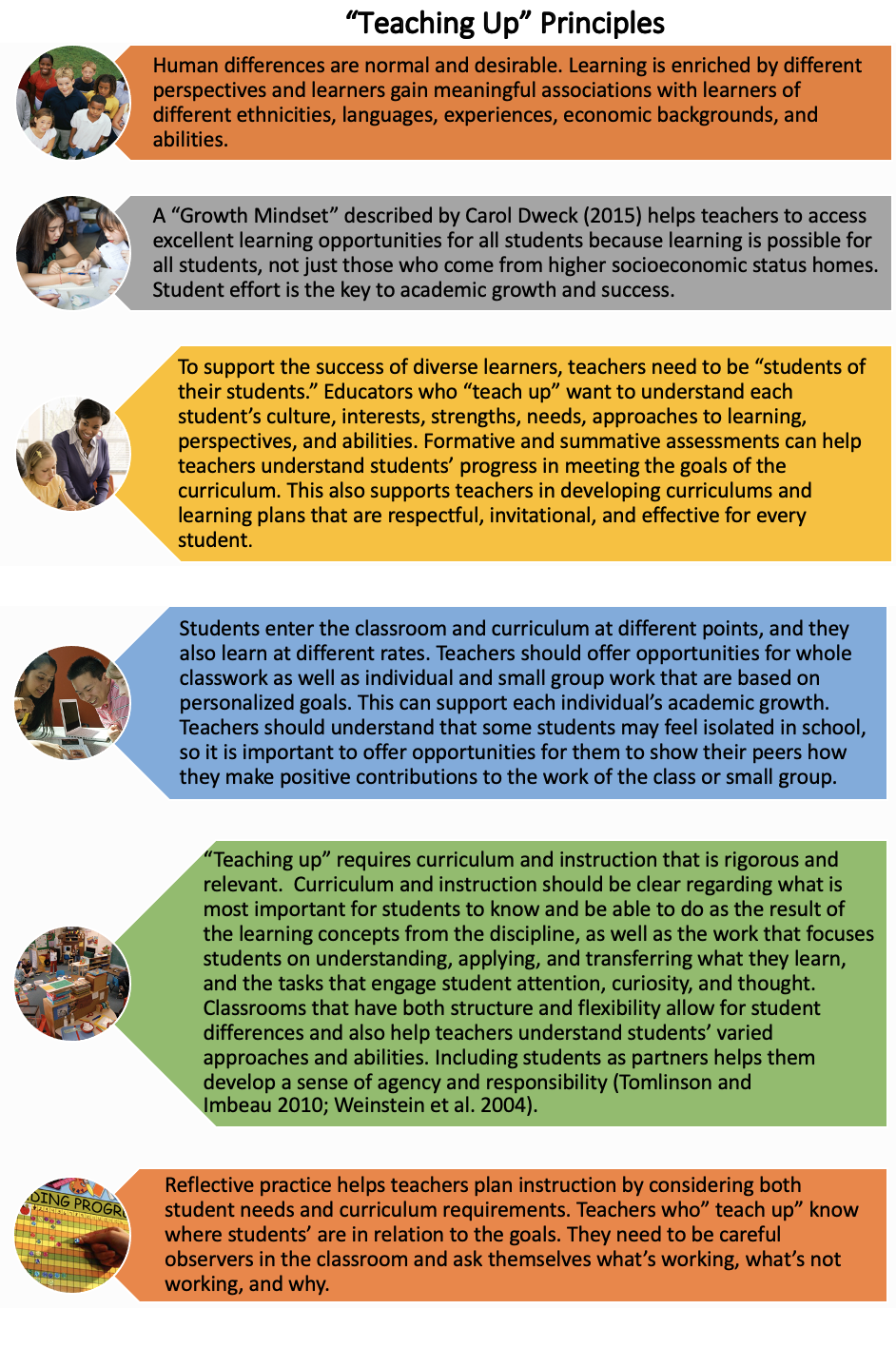
Teaching Up Principles
Developing Inclusive Practices in Literacy
Anita Nigam, author of the proceeding article, was born in India and taught elementary students there and in the U.S. She is currently a faculty member at a University in Illinois where she specializes in literacy and English language learning (ELL).
Classrooms now more than ever need to reflect the diverse cultures present as they provide a range of perspectives and experiences that can help shape the minds of all the students in mainstream classes. Previously, if there were students needing special attention, they were provided assistance outside the classroom; however, the focus now is to have the teacher meet the needs of all learners within the classroom, leading to the birth of inclusive classrooms. Therefore, the onus of developing culturally responsive classrooms falls on the shoulders of all classroom teachers. However, many teachers grew up without much exposure to cultural diversity and do not see the potential of all students nor the many issues and challenges that some students face (Sleeter, 2008). Teachers of color tend to recognize the literate potential of students of color and have high expectations for them but are not always aware of how to use students’ cultural knowledge to inform their teaching practices (Villegas & Davis, 2008).

The summary of this qualitative research study is aimed at promoting awareness and implementation of developing culturally responsive literacy practices among preservice teachers who were part of the Elementary Education Program in a private university in the Midwest region of the United States. All 16 preservice teachers had a broad definition of diversity, i.e., the inclusion of students from special population which included ELLs and learners from diverse populations.
Throughout the semester the preservice teachers worked in an elementary school which was their clinical placement and also at an after-school program that offered tutoring services for students from grades one through five of the elementary school. Preliminary results and findings from the study show four major themes that emerged from the analysis of the data:
- creating differentiated assignments for students to do after they finish their work to meet the needs the different abilities that students have,
- pairing mainstream students with students from diverse backgrounds to talk about a family or a public event and encourage nurturing relationships and a welcoming environment,
- using the trading card strategy for vocabulary where students are given the choice to write the definition in their native language,
- reading “ First You, Then Together ” where the teacher would have students read a page or two to themselves before reading it together while having the students follow along with their fingers or reading aloud with the teacher while going over the same page, and
- using technology such as Chromebook to enable dictation so students are able to demonstrate their knowledge and writing abilities without having to jump through extra hurdles to complete the writing tasks required of them within the lesson.
These findings, though modest, are an attempt to create awareness of social equity literacy practices among preservice teachers teaching at a local elementary school with a diverse population.
A Place at the Table: Create a Community of Learners
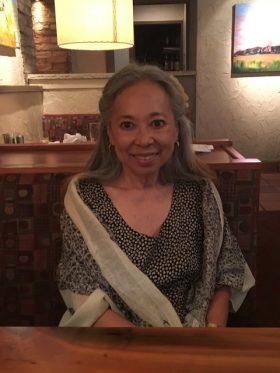
In the following article, A Place at the Table: Create a Community of Learners , Yvonne Siu-Runyan, a former classroom teacher, university professor, and past president of the National Council of Teachers of English, has summed up what is needed to help all learners gain literacy skills.
In order to learn, all students need to take risks. In order to take risks, all students need a safe place to learn and to be seen. That is, your students need to know that in your classroom, they each have a seat at the table and have voices and stories to share.
- Books and stories provide common experiences for students.
- Books and stories nurture an understanding of self and others.
- Books and stories shape our understanding of the world around us and ourselves.
- Listen to your students’ conversations in various settings . This simple action will provide you with useful information to guide your instruction and conversations with your students.
- Your best and most important ally are the parents/guardians.
- Never doubt the power of having a good relationship with parents/guardians.
- Thus, your first contact with parents/guardians should be a positive, not a negative one.
- Do call the parents/guardians of your students and make sure you have positive things to say? Most parents/guardians expect the worst.
- Before you end your conversation, be sure to tell the parent/guardian to share the positive information with the child.
- The next day watch — this child will stand taller, do more, and take more learning risks because this child will know that you care, and learning involves caring and LOVE.
- Students like it when their teachers read and write with them and share their reading and writing.
- By sharing your literacy experiences with students, they get an inside-out look at the power of reading and writing and you become a member of the literacy club in your classroom.
- Show the students your “inside out” process and make it visible.
- Students learn when their teachers model and show their inside out process.
- What do I do that helps you as a reader, writer, and thinker?
- What do I do that does not help you as a reader, writer, and thinker?
- When I asked these two questions of my students, I learned that my students liked it when I read and wrote alongside them for it made visible the processes involved in reading, writing, and thinking.
- Have a classroom library and showcase books. If we want our students to read, then it makes good sense that books must be accessible.
Books fall open; we fall in! I love this saying, “Ah … the power of the printed page.” Do create a classroom learning environment where students are surrounded by books. For if there are a wide variety of books in your classroom, your students will find books that speak to them. There is a plethora of stunning books written for young people like never before. Be sure to have books in which our young can see themselves and to which our students can relate. In this way, our young will be better equipped to reach back in order to reach out, and then reach out in order to reach forward with courage and love in our quest to make this place we call Earth a better place for all for: Education should liberate, not indoctrinate.
I end with this old Chinese Proverb: “Yin Zhen Zhi Ke,” or “Drinking poison to quench thirst.” This Chinese saying warns us that measures taken in the short term to solve a problem may be more damaging than the problem.
Be wary of narrow standards and standardized tests. Learning is much more.
Homeschooling
For those parents and students who want to differentiate based on individual needs, homeschooling is becoming one of the “go-to” alternatives.
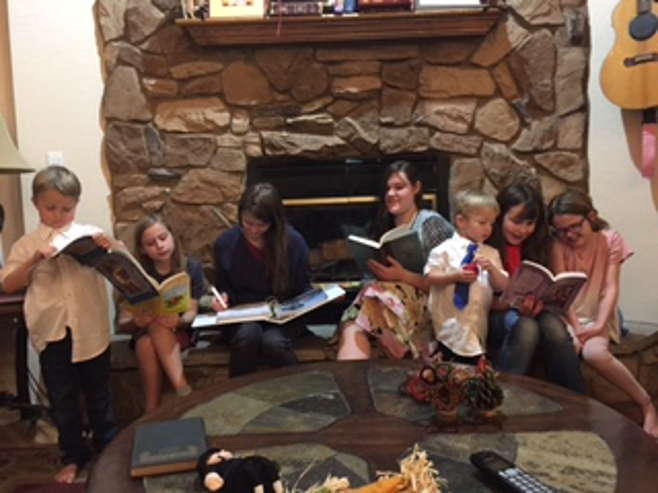
Home-based education led by families has been practiced by cultures around the world and down through history, and it has played an influential role in Western civilization (Gordon & Gordon). Homeschooling today is the parent-led practice of teaching their children rather than attending a public school (Ray, 2000 ).
During American Colonial times, children were taught at home using the Bible for reading. Writing, math, and vocational skills were usually taught by the father (Ray, 2017). The children of missionary families or families who traveled were taught using mail-order curricula that they could take to different parts of the world. Homeschooling at that time was often a joint effort between parents, tutors, older children, and families. At times, parents or groups would sometimes pool their resources to employ a teacher for more support (Hill, 2000 ). At the end of the 19th century, homeschooling was widely practiced, and public or formal school attendance was voluntary (Tyack, 1974 ).
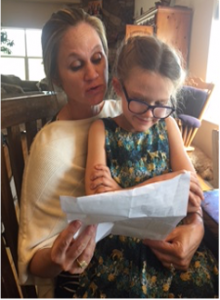
More than two million children today are homeschooled (Ray, 2017). The number of children in homeschools is now larger than the New York City public school system and even larger than the Los Angeles and Chicago public school systems combined (Hill, 2000 ; Ray, 2017). As a result, there is a rising need for support, collaboration, and professional expertise. Groups for home educators and networks are growing and becoming a new type of educational institution (Hill, 2000 ). They are usually identified as associations, co-ops, or charter schools (Collom, 2005 ; Hill, 200 0 ). Home school parents and supporters of this alternative form of education have developed new teaching models and curriculums to help parents become educators (Tilhou, 2020).
Common beliefs, motivations, and the choice to homeschool attract homeschool parents/educators who want mutual support and collaboration. These families do not want to be isolated, so they make use of services and resources from experts, and they form teams that gain others’ support, often through organized groups (Collom, 2005 ; Hill, 2000 ). The advantages of this collaborative effort can extend beyond families that collaborate with the support of public funds for materials and resources, facilities, and administrator’s time (Hill, 2000 ).
Collom ( 2005 ) found that the newest homeschoolers are highly motivated by academic reasons. The decision to home school can be categorized into four areas and include those who:
- are critical of public schools,
- attracted to home-based public charter,
- have ideological reasons, and
- focused on family and children’s needs.
Results also indicate that the home-based charter has been the most popular motivation, and criticism of public schools had a slightly lower score.
Homeschool Partnerships with Public Education and the Future
Thomas ( 2016 ) has stated that if home parents/educators see value in the resources in their community, public school parents may likely feel the same way. Additionally, if homeschooling parents make educational decisions based on the goal of providing high-quality learning experiences, teaching faith, setting student goals, and meeting family needs, public school parents may also have similar goals. Can public schools provide a variety of choices parents are wanting? Is it possible for public schools to provide more customized schedules that fit the changing interests and needs of public-school families? Thomas ( 2016 ) argues, after examining homeschool families’ instructional decisions and motivations, that public education ought to find more ways to listen to parents’ needs and understand the educational goals they have for their children.
By considering alternative educational models and parental motivations for forming and joining the homeschool movement, public education may gain valuable insights about meeting the needs of families in the 21st century (Tihou, 2020). There are currently school districts that engage in partnerships with homeschool educators. Partnerships allow homeschool students to access classes and programs while maintaining the respect that the child’s primary teacher is his or her parent (Dahlquist, et al. ( 2006 ). It may be advantageous for public schools to adopt inclusive policies that offer a range of partnership options with homeschool families as a way to improve communication and create more responsive public spaces where responsibilities for raising the next generation are shared (Thomas, 2016).
The prevalence of homeschool support groups and associations is growing across the United States. Members of these groups come from a variety of backgrounds, but all have a shared interest in providing quality education for their children. What has emerged from this like-mindedness is a movement of millions across the United States not only to educate one’s own child but to come together and form groups which lead to a greater impact on children’s learning and parents’ teaching. What is still unknown is the impact this movement may ultimately have.
Insight 13.0
Gone are the days when a teacher could lecture to a class for 30 minutes to an hour and keep their attention.
To be effective, teachers today must be knowledgeable about different content areas, as well as models and strategies for engaging all students in meaningful learning experiences. Parents make choices about their children’s education, and public schools are, in effect, competing with charter schools and homeschools for students.
Several excellent resources for meeting the challenges of 21st-century learning are available. For this ILA, view two or more of the preceding videos and post your biggest “takeaways” using in the ILA Response Group in Hypothesis.
Connecting to the 21st-Century Student
Cultural Diversity: Dr. Geneva Gay
Dr. Geneva Gay from the University of Washington, Seattle answers the question “Why is it important for faculty to employ culturally responsive teaching practices?”
The Power of a Teacher | Adam Saenz | TedEx Yale
Teachers and students in the 21st century must have broader and more varied skills than their counterparts of the past. Incorporating Universal Design as a part of curriculum planning can ease access to learning for many students. Some parents have chosen homeschooling as a way to meet the educational needs of their children. Carol Tomlinson and others find that differentiating instruction through “teaching up” can meet the needs of a diverse classroom.
Curriculum Essentials: A Journey Copyright © 2021 by Linda J. Button, Ed.D. is licensed under a Creative Commons Attribution-ShareAlike 4.0 International License , except where otherwise noted.
Share This Book
7 Key Features of 21st Century Learning

Chris Drew (PhD)
Dr. Chris Drew is the founder of the Helpful Professor. He holds a PhD in education and has published over 20 articles in scholarly journals. He is the former editor of the Journal of Learning Development in Higher Education. [Image Descriptor: Photo of Chris]
Learn about our Editorial Process

21st Century education focuses on personalization, equality, collaboration, communication and community relationships.
These skills are required in a rapidly changing global economy. Students will be training for jobs that do not even exist yet. These jobs will require the types of problem solving and communication skills that can only be learned through 21st Century approaches to learning.
7 Key Features of 21st Century Education are:
- Personalized learning.
- Equity, diversity and inclusivity.
- Learning through doing.
- Changed role of the teacher.
- Community relationships.
- Technology.
- Teacher professionalization
Explanations of each are provided below.
21st Century Learning: Key Characteristics
These 7 features of 21st Century learning and teaching are adapted from (and build upon) Bolstad et al. (2012).
1. Personalized Learning

A personalized approach recognizes that not all students learn in the same manner.
Personalized learning involves differentiating instruction so that students can learn in ways that suit their personal needs.
Educators can adjust their teaching methods in several ways. They could:
- Differentiate content difficulty;
- Differentiate modes of delivery; and
- Differentiate assessment strategies.
By contrast, the 20th Century approach was characterized by a one size fits all approach.
In the old model, all students in the class were taught the same content in the same way at the same time. Instruction was usually transmission-style under a paradigm of teaching often referred to as the banking model of education .
The significant shift from the one size fits all to personalized approach can be attributed to evolving understandings of how people learn.
Theories such as the sociocultural theory gained prominence in the latter decades of the 20th Century, which are now dominant in the 21st Century. These theories recognize that learners are influenced significantly by social, cultural and environmental factors which lead to differentiated outcomes.
Many theorists now believe that students need to learn through various different learning modalities depending on the student’s needs.
Examples of personalized learning include:
- Differentiated instruction ;
- Individualized education plans;
- Student-led projects in the classroom;
- Enhanced freedom of choice in the classroom.
2. Equity, Diversity and Inclusivity

In the 20th Century students were expected to conform to the mainstream or be excluded. But in the 21st Century, social inclusion and difference are celebrated.
We embrace equity, diversity and inclusivity in classrooms by:
- Equity: A goal of 21st Century educators is to achieve equality of outcomes. Educators are attempting to close achievement gaps between rich and poor. Hopefully one day your family’s wealth will not determine how successful you are at school.
- Diversity: Diversity is now considered a strength in classrooms. When students are different, they learn that difference is okay. They befriend people of different cultures and learn not to be afraid of other cultures around them.
- Inclusivity: We now believe that people of all ability levels, physical disabilities, or learning disabilities deserve to be included in mainstream classrooms. This can help them contribute to mainstream life and show them they are welcome and equal participants in the world.
Driving factors behind the turn toward increased equity, diversity and inclusivity include:
- A shift to the social model of disability , which argues that society needs to adapt to include people with learning and physical disabilities into mainstream classrooms;
- Increased cultural diversity leading to greater awareness of differences between cultures;
- Feminist and critical theories gaining currency in society, leading to awareness of the need for greater gender equality
3. Learning through Doing

Old behaviorist methods of education that were typical in the 20th Century saw learning as:
- Memorization of information.
- Transmission of information from teacher to student.
- Filling your mind up with facts.
These methods are thrown out in a 21st Century learning approach.
Now, we encourage students to learn through doing .
The central idea in the ‘learning through doing’ approach is that we are much better at knowing, remembering and using knowledge if we learn actively, rather than through passive learning .
When we are learning through doing, we:
- Have first-hand experience with applying information to the real world.
- Get the opportunity to learn through trial-and-error (so we know why something is true or not).
- Aren’t told something, but rather we discover things through our engagement with the world around us.
- Learn information that isn’t just theoretical but can be applied to things in our lives somehow.
There are many approaches to education that fit within this 21st Century ‘learning through doing’ paradigm. Here are just a few:
- Cognitive Constructivism: This is a theory of learning that believe we learn by constructing ideas in our heads (rather than having them inserted into our minds). We construct information when we place ideas in our working memory, compare it to our existing prior knowledge , and make decisions about how useful, truthful or valuable this new knowledge is to us before saving it, using it to change our minds, or discarding it. We don’t just take bits of information for granted: we ‘mull them over’ and ‘consider them’ before deciding how to use them.
- Problem Based Learning : PBL is a classroom-based constructivist teaching strategy . It involves learning through solving problems. This is clearly very different to learning by being told facts. That’s because students aren’t given answers to problems: they have to solve the problems themselves to discover the truth. That’s why sometimes we also call PBL discovery learning .
- Problem Posing Education (PPE): PPE is very similar to problem based learning. In a problem posing environment, the teacher or student will come up with a problem and present the problem to the class. The class and the teacher need to learn the answer to this problem together. So, not even the teacher enters the classroom with the answers in this approach. It therefore creates a very democratic co-learning atmosphere in the classroom.
- Project Based Learning: In a project-based classroom, students will work on one big problem for many lessons (maybe even weeks or months) at a time. Students will often work together and use resources around them like community members or the internet to create something new (their project!).
- Phenomenon Based Learning (PhBL): PhBL is an approach that is popular in Finland. Rather than learning through subjects (mathematics, languages, science, history), students focus on a ‘phenomenon’ (or ‘topic’) that requires them to use multiple different forms of knowledge from different subject areas to learn about the phenomenon in a holistic way.
4. Rethinking Learner and Teacher Roles

In the 21st Century, classrooms have changed from being teacher-centered to student-centered .
In the past the students all focused on the teacher and listened to the teacher’s words. Now, the teacher focuses on the students who are the center of attention. The teacher’s job is to help coach the students as they learn.
In the 20th Century , teacher and learner roles were very rigid:
- Teacher as Authority: The teacher was the active participant. They did all the talking and were the ultimate authority on all topics. They were the ‘sage on the stage’. This is why we often call a 20th Century approach “teacher-centered”.
- Passive Students: The student was the passive participant. They sat, listened and memorized. They had very few opportunities to contribute their prior knowledge, exercise choice or challenge the teacher’s points.
In the 21st Century , the roles of both the teacher and the student have changed:
- Teacher as Facilitator: The teacher is now a co-learner with the students. The teacher may still need to control the environment by making it safe and focused on learning. The atmosphere of the classroom is still very much up to the teacher. However, teachers are no longer just the authorities on topics. Instead, their job is to help guide students as the students learn through active processes. The teacher is no longer the center of attention – that’s the student!
- Active Students: Students learn through doing rather than listening. The teacher is no longer the authority on knowledge, so students need to come to conclusions themselves using their critical thinking and creative skills.
5. Community Relationships

We are increasingly realizing how important community engagement is for learning.
In our communities there are amazingly useful people who can teach and inspire our students far better than we can.
Teachers know they can’t be experts on everything. But there is an expert for every topic out there in the world.
So teachers need to seek out experts and bring them into the classroom. By leveraging the skills and knowledge of the community, we can create a better learning experience for our students.
In multicultural societies, community members can also teach us about how to best teach children within their cultures. For example, children from Indigenous cultures may have grown up with very different learning styles from other children in the class. By engaging with local Indigenous people, teachers can learn how best to teach those children in their class.
Bringing people from different walks of life into the classroom also helps our students to create connections with people who aren’t like themselves. This can help inclusion, education for social justice, and create links between people of different cultures.
6. Technology

Modern technologies can be incredibly helpful in classrooms today. Walk into a classroom now and you’ll be shocked at how much things have changed in just a decade. Technology is everywhere!
It is important to use new learning technologies in appropriate ways. Students shouldn’t use technology to prevent them from thinking or help them cheat. Instead, technology should be used to help students access information or think in ways they couldn’t have done so otherwise. We call technologies that help students think harder ‘ cognitive tools ’ for learning.
Read Also: 13 Examples of Education Technology in the 21st Century
7. Teacher Professionalization

Teaching children in this century is clearly much more complicated than it was in the last one! We need to create personalized lessons, be inclusive, aim for eqaulity, encourage creativity , engage with the community, use technology to enhance learning, and more!
To ensure students get the best learning possible, teachers in the 21st Century need ongoing training and support. They need to know all the latest research on best teaching practices. They need opportunities to ask questions themselves, try out new strategies and learn from experts throughout their career.
One of the biggest challenges for teachers is the rapidly changing educational environment. New technologies are quickly coming into classrooms to help us personalize and support learning for all our students.
Teachers need time and space to learn how to use technology and new pedagogies in ways that will best help their students.
21st Century education is influenced by globalization , rapid social change and new research into how people learn. The role of the teacher in the 21st Century classroom is to ensure learning is student-centered rather than teacher-centered. This sort of student-focused learning has seven key characteristics:
- Teacher professionalization.
The 7 elements outlined in this article are adapted from:
- Bolstad, R., Gilbert, J., McDowall, S., Bull, A., Boyd, S., & Hipkins, R. (2012). Supporting future oriented learning and teaching . New Zealand: New Zealand Council for Educational Research.

- Chris Drew (PhD) https://helpfulprofessor.com/author/chris-drew-phd-2/ 10 Reasons you’re Perpetually Single
- Chris Drew (PhD) https://helpfulprofessor.com/author/chris-drew-phd-2/ 20 Montessori Toddler Bedrooms (Design Inspiration)
- Chris Drew (PhD) https://helpfulprofessor.com/author/chris-drew-phd-2/ 21 Montessori Homeschool Setups
- Chris Drew (PhD) https://helpfulprofessor.com/author/chris-drew-phd-2/ 101 Hidden Talents Examples
Leave a Comment Cancel Reply
Your email address will not be published. Required fields are marked *
- Entertainment
- Environment
- Information Science and Technology
- Social Issues
Home Essay Samples History 21St Century
Navigating the 21st Century: Understanding of Modern Learning
Table of contents, the shifting landscape of learning, characteristics of 21st century learners, challenges and opportunities, pathways to success in the 21st century, conclusion: embracing the 21st century learning journey.
*minimum deadline
Cite this Essay
To export a reference to this article please select a referencing style below

- Joseph Stalin
- Muslim Empires
- Harlem Renaissance
Related Essays
Need writing help?
You can always rely on us no matter what type of paper you need
*No hidden charges
100% Unique Essays
Absolutely Confidential
Money Back Guarantee
By clicking “Send Essay”, you agree to our Terms of service and Privacy statement. We will occasionally send you account related emails
You can also get a UNIQUE essay on this or any other topic
Thank you! We’ll contact you as soon as possible.
Integrating 21st century skills into education systems: From rhetoric to reality
Subscribe to the center for universal education bulletin, ramya vivekanandan rv ramya vivekanandan senior education specialist, learning assessment systems - gpe secretariat.
February 14, 2019
This is the third post in a series about education systems alignment in teaching, learning, and assessing 21st century skills .
What does it mean to be a successful learner or graduate in today’s world? While in years past, a solid acquisition of the “three Rs” (reading, writing, and arithmetic) and mastery in the core academic subjects may have been the measure of attainment, the world of the 21 st century requires a radically different orientation. To participate effectively in the increasingly complex societies and globalized economy that characterize today’s world, students need to think critically, communicate effectively, collaborate with diverse peers, solve complex problems, adopt a global mindset, and engage with information and communications technologies, to name but just a few requirements. The new report from Brookings, “ Education system alignment for 21st century skills: Focus on assessment ,” illuminates this imperative in depth.
Recognizing that traditional education systems have generally not been preparing learners to face such challenges, the global education community has increasingly talked about and mobilized in favor of the changes required. This has resulted in a suite of initiatives and research around the broad area of “21st century skills,” which culminated most notably with the adoption of Sustainable Development Goal 4 and the Education 2030 agenda, including Target 4.7, which commits countries to ensure that learners acquire knowledge and skills in areas such as sustainable development, human rights, gender equality, global citizenship, and others.
In this landscape, Global Partnership for Education (GPE) has a core mandate of improving equity and learning by strengthening education systems. GPE supports developing countries, many of which are affected by fragility and conflict, to develop and implement robust education sector plans. Depending on the country, GPE implementation grants support a broad range of activities including teacher training, textbook provision, interventions to promote girls’ education, incentives for marginalized groups, the strengthening of data and learning assessment systems, early childhood education, and many other areas.
This work is buttressed by thematic work at the global level, including in the area of learning assessment. The strengthening of learning assessment systems is a strategic priority for GPE because of its relevance to both improving learning outcomes and ensuring effective and efficient education systems, which are two of the three key goals of the GPE strategic plan for the 2016-2020 period . The work on learning assessment includes the Assessment for Learning (A4L) initiative, which aims to strengthen learning assessment systems and to promote a holistic measurement of learning.
Under A4L, we are undertaking a landscape review on the measurement of 21st century skills, using a definition derived from Binkley et. al . and Scoular and Care :
“21st century skills are tools that can be universally applied to enhance ways of thinking, learning, working and living in the world. The skills include critical thinking/reasoning, creativity/creative thinking, problem solving, metacognition, collaboration, communication and global citizenship. 21st century skills also include literacies such as reading literacy, writing literacy, numeracy, information literacy, ICT [information and communications technologies] digital literacy, communication and can be described broadly as learning domains.”
Using this lens, the landscape review examines the research literature, the efforts of GPE partners that have been active in this space, and data collected from a sample of countries in sub-Saharan Africa and Asia in regard to the assessment of these skills. These research efforts were led by Brookings and coordinated by the UNESCO offices in Dakar and Bangkok. As another important piece of this work, we are also taking stock of the latest education sector plans and implementation grants of these same countries (nine in sub-Saharan Africa and six in Asia), to explore the extent to which the integration of 21st century skills is reflected in sector plans and, vitally, in their implementation.
Though the work is in progress, the initial findings provide food for thought. Reflecting the conclusions of the new report by Brookings, as well as its earlier breadth of work on skills mapping, a large majority of these 15 countries note ambitious objectives related to 21st century skills in their education sector plans, particularly in their vision or mission statements and/or statements of policy priorities. “Skills” such as creativity and innovation, critical thinking, problem-solving, decisionmaking, life and career skills, citizenship, personal and social responsibility, and information and communications technology literacy were strongly featured, as opposed to areas such as collaboration, communication, information literacy, and metacognition.
However, when we look at the planned interventions noted in these sector plans, there is not a strong indication that countries plan to operationalize their intentions to promote 21st century skills. Not surprisingly then, when we look at their implementation grants, which are one of the financing instruments through which education sector plans are implemented, only two of the 15 grants examined include activities aimed at promoting 21st century skills among their program components. Because the GPE model mandates that national governments determine the program components and allocation of resources for these within their grant, the bottom line seems to echo the findings of the Brookings report: vision and aspiration are rife, but action is scarce.
While the sample of countries studied in this exercise is small (and other countries’ education sector plans and grants may well include integration of 21st century skills), it’s the disconnect between the 15 countries’ policy orientation around these skills and their implementation that is telling. Why this gap? Why, if countries espouse the importance of 21st century skills in their sector plans, do they not concretely move to addressing them in their implementation? The reasons for this may be manifold, but the challenges highlighted by the Brookings report in terms of incorporating a 21 st century learning agenda in education systems are indeed telling. As a field, we still have much work to do to understand the nature of these skills, to develop learning progressions for them, and to design appropriate and authentic assessment of them. In other words, it may be that countries have difficulty in imagining how to move from rhetoric to reality.
However, in another perspective, there may be a challenge associated with how countries (and the broader education community) perceive 21st century skills in general. In contexts of limited resources, crowded curricula, inadequately trained teachers, fragility, weak governance, and other challenges that are characteristic of GPE partner countries, there is sometimes an unfortunate tendency to view 21st century skills and the “basics” as a tradeoff. In such settings, there can be a perception that 21st century skills are the concern of more advanced or higher-income countries. It is thus no wonder that, in the words of the Brookings report, “a global mobilization of efforts to respond to the 21CS [21st century skills] shift is non-existent, and individual countries struggle alone to plan the shift.”
This suggests that those who are committed to a holistic view of education have much work to do in terms of research, sharing of experience, capacity building, and advocacy around the potential and need for all countries, regardless of context, to move in this direction. The Brookings report makes a very valuable contribution in this regard. GPE’s landscape review, which will be published this spring, will inform how the partnership thinks about and approaches 21st century skills in its work and will thereby provide a complementary perspective.
Related Content
Helyn Kim, Esther Care, Alvin Vista
January 30, 2019
Tserennadmid Nyamkhuu, Jun Morohashi
February 5, 2019
Global Education K-12 Education
Global Economy and Development
Center for Universal Education
Mary Burns, Rebecca Winthrop, Michael Trucano, Natasha Luther
October 15, 2024
Anusha Bharadwaj
October 14, 2024
Rachel Dyl, Ghulam Omar Qargha
October 4, 2024
More From Forbes
What is 21st century learning how do we get more.
- Share to Facebook
- Share to Twitter
- Share to Linkedin
Jake Marshall, aerospace and aeronautics program, in the St. Vrain Valley Schools' Innovation ... [+] Center.
We’re living in an extraordinary century:
- Almost six in ten of the nearly 8 billion of us on Earth are connected to the Internet; adding the next 4 billion people to the Internet is the biggest learning opportunity in history.
- In the last two decades, we became a planet of cities. About 55% of the world’s population lives in cities and by mid-century—when there are 10 billion of us—it will be more than two thirds, so we’ll need to invent ways to make cities workable, livable, and sustainable.
- Extreme poverty was reduced from more than a third to less than 10%, with a shot at eradicating extreme poverty by 2030—there is enough wealth if there is enough will.
- Around mid-century, there is a pretty good chance that there will be super intelligent computers (often called artificial general intelligence ) that will help solve our most vexing problems—and pose several existential risks.
- It will be the hottest century on record, and the last century during which there is a chance to do something about it.
What kind of education would prepare young people for this amazing and terrifying period of history? For 40 years, we’ve been talking about the aims and strategies of 21st century learning. Now that we’re a couple decades in, we have a pretty good view.
What is 21st Century Learning?
“All students have an educational experience preparing them to be effective lifelong learners and contributors.” That’s how Battelle for Kids thinks about 21st century learning. They encourage communities to develop a Portrait of a Graduate embracing key skills including critical thinking, communication, collaboration, and creativity that young people need to thrive in this complex rapidly changing world.
Holding community conversations about what is happening, what it means, and how to prepare creates a shared sense of urgency and what Battelle calls “a North Star for system transformation.”
What does 21st Century Learning Look Like?
Learning for the 21st century is both personal and personalized. It is purposeful and honors learner variability . It combines skill sprints and extended challenges. It combines learner voice and choice with thoughtful guidance to shape learning journeys.
As Ron Berger recently said , learners do their best work when 1) there is a culture of respect and belonging, where students can be their true selves, 2) where work is meaningful and will impact the world, 3) where professionals provide expert critique and guidance, and 4) where there is a genuine audience.
With the community as classroom, 21st century learning happens anywhere, anytime. It addresses complexity with design thinking and embraces an entrepreneurial mindset in an effort to spot opportunity and deliver value.
Why 21st Century Learning?
The best preparation for a complex and rapidly changing future is learning to make a contribution today. Extended community-connected challenges build agency, design thinking and entrepreneurial mindset.
Well-resourced students often have access to powerful learning experiences. Equity demands that all young people have access.
In addition to being vital for individual learners, 21st century learning builds vibrant communities. The ecosystems that skill-up will win in the innovation economy.
And given the pressing issues of our time, it’s critical that we mobilize the ingenuity of our youth to meet society’s growing challenges.
Progress toward 21st Century Learning
There are many signs of progress: new schools have been formed, schools are being transformed, districts and communities are embracing 21st century learning.
About 5,000 new schools have been formed around new learning goals. At least that many existing schools are being transformed around 21st century goals. Many of these new and transformed schools belong to networks that share goals, tools, and strategies.
As part of Future Ready Schools , more than 3,400 school districts representing 20 million learners have pledged a commitment to innovative learning practices.
Hundreds of communities have updated their learning goals, leading to a deeper understanding of the desired skills and characteristics
Accelerating 21st Century Learning
There are four ways to expand access to 21st century learning to help more young people thrive—both now and as adults.
- More projects: integrated, community-connected projects with valuable products;
- More leadership: opportunities to serve and make a difference;
- More work-based learning: job shadows, client projects, internships and accelerated pathways to high wage employment; and
- More guidance: sustained adult relationships that guide learning journeys and expand opportunities.
21st Century Policy
The two decade fixation with grade level proficiency in math and reading as measured by end-of-year standardized tests locked in traditional grade level structures, encouraged whole group (rather than personalized) learning, and reduced extended community-connected learning experiences.
Like Virginia and South Carolina, states should adopt a high-level portrait of a graduate , and encourage school districts and networks to develop outcomes frameworks that value leadership and problem solving.
States can address the fixation on grade level proficiency by reducing (and eventually eliminating) standardized testing. They can accomplish this by asking districts and networks to demonstrate how students are growing and achieving.
States also can create incentives for new school development (the way Texas and Ohio did) and support innovation zones , where schools have the flexibility to develop 21st century school models.
Now that we’re nearly 20 years into this new century and a couple years into the AI-driven innovation economy, it’s time for all youth worldwide to have access to leadership opportunities and community-connected challenges. It’s the best chance we have of enabling them to contribute to a vibrant planet that they can leave for their kids.

- Editorial Standards
- Forbes Accolades
21st-Century Skills That Every Learner Needs
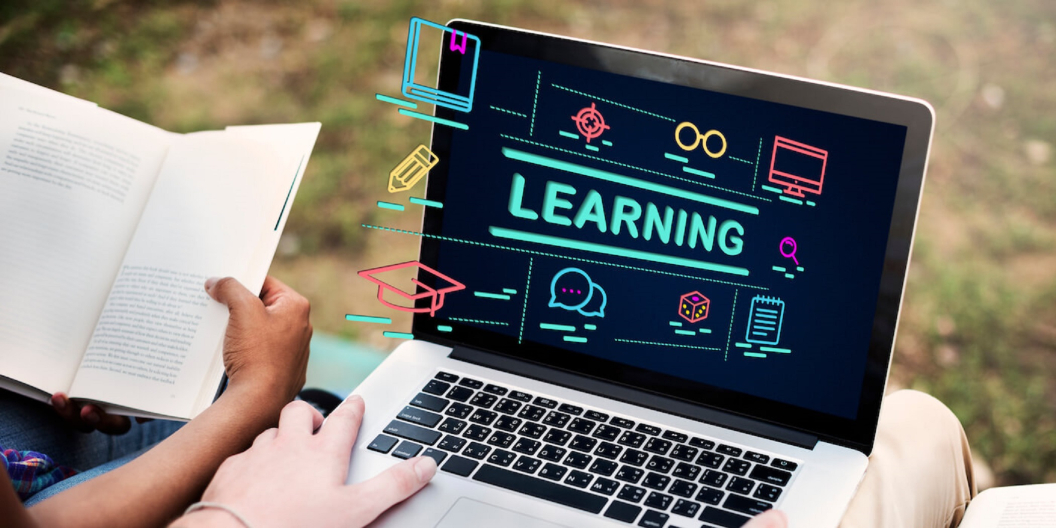
You might have heard about the significance of critical thinking, teamwork, creativity, and other “21st-century skills.” These traits are considered indispensable for thriving in the contemporary world. However, what exactly are those super skills, and how can you master them?
In this article, we’ll discuss which 21st-century skills are imperative and how they can benefit your studies, interpersonal communication, and self-development. After all, your academic achievements and work experience may not be sufficient for prosperity nowadays. Get ready to learn everything about 21st-century skills! For more interesting topics and tips, visit our free essay database.
- 🌐 What Are 21st-Century Skills?
- 🤝 21st-Century Skills Types
- 🛎️ The Ultimate List of Skills
👩💻 How to Develop 21st-Century Skills
- 🏁 Conclusion
🔗 References
🌐 what are 21 st -century skills.
So, what are 21st-century skills? They encompass a broad set of knowledge, habits, and character traits that educators and employers find essential to flourish in today’s world. These qualities comprise critical thinking, collaboration, leadership, and other abilities needed in collegiate programs and modern workplaces.
21 st -Century Learning
The role of 21 st -century education is to help every student learn how to learn. Modern learning encourages collaboration, inspires creativity, and rewards critical thinking. It teaches students how to make sense of the never-ending flow of information and use it wisely. By providing students with these fundamental abilities, 21st-century education helps them thrive in the workplace.
Here are some critical features of 21st-century learning:
- It aims to develop creativity in students . The more complex the world becomes, the more creative solutions people need to overcome its challenges.
- It is highly individual. In modern society, people value individuality and authenticity. 21st-century education seeks a unique approach for every student.
- It uses technologies. Books used to be the primary source of information for people. However, nowadays, you can develop 21st-century skills with the help of workshops, online courses, and even YouTube.
- It highly values students’ progress . A 21st-century education isn’t about making students memorize information to get an A+ on their assignments. Modern learning systems adhere to the idea that average standardized scores shouldn’t measure a student’s success.

Why Are 21st-Century Skills Essential?
The modern world is characterized by globalization, rapid technological development , and social diversity, making 21st-century skills more essential to students than ever. These processes require educators to create a framework for successful studying methods and to ensure young people can prosper in a world of constant transformation. Opportunities for 21st-century students are also expanding. They include international study programs , global knowledge exchanges, and projects organized by companies with the possibility of obtaining a job, etc.
The 21st-century workplace has also become more innovative and competitive. To succeed in modern information-age jobs, students need to solve problems creatively, work in teams, communicate on social media, learn to use new technologies, and deal with a flood of information. Top managers highly value employees who can meet these standards and have the energy to expand their skills, even if they lack some academic or working experience. Hence, 21st-century skills have become a must for anyone who wants a well-paying job in a modern company.
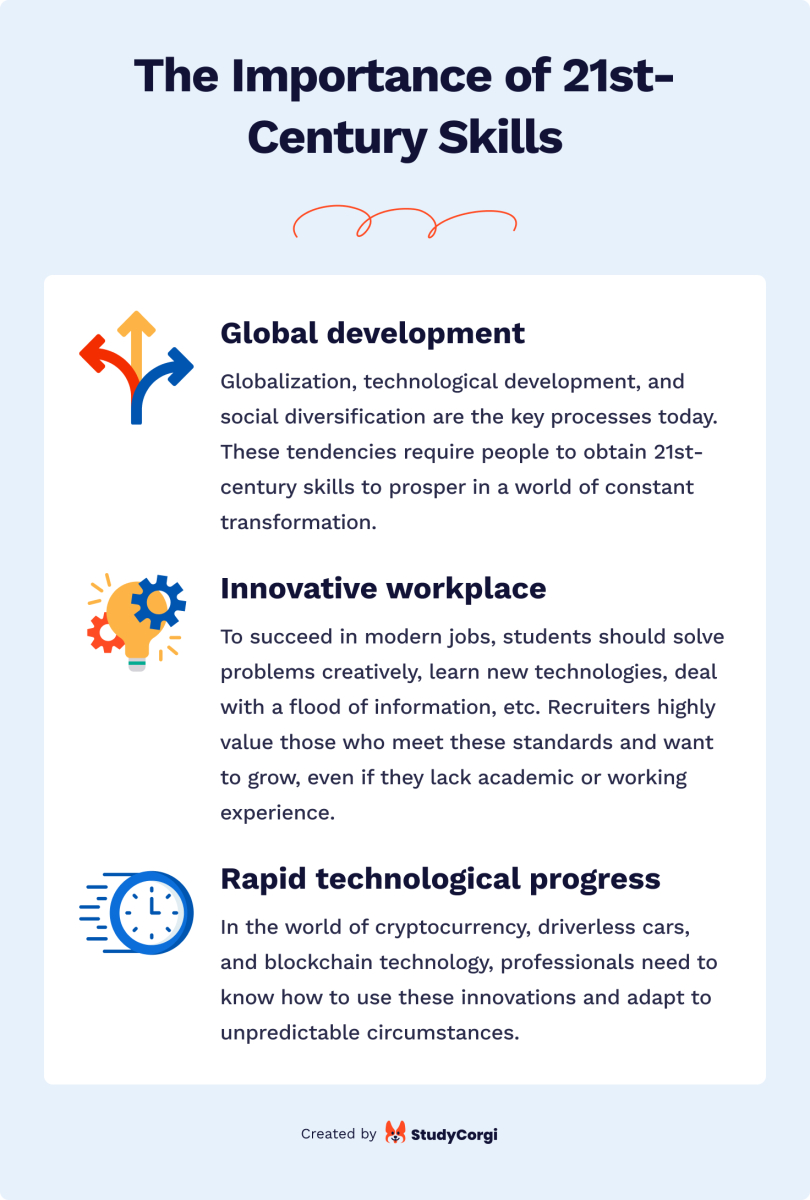
Who Needs These Skills?
The 21st century has experienced significant economic changes and breakthrough discoveries. We now have cryptocurrency, driverless cars, and blockchain technology, among other inventions. And with these innovations, we need to learn: 1) how to use them and 2) how to adapt to unpredictable circumstances.
21st-century skills are essential for high-school and college students just now entering the corporate world. Numerous new careers are appearing in today’s labor market: for example, cybersecurity experts, SMM specialists, and many others. New professions, as well as the jobs of the future, are full of unknown challenges. Consequently, employers seek creative and observant candidates with skills to deal with unpredictable aspects of work. So, our advice is to prepare yourself for new technologies and careers that might not yet exist.
🤝 21st-Century Skills – Main Types
Usually, experts divide 21st-century competencies into 3 types: learning skills, life skills, and digital literacy. These categories contain hard and soft skills that help workers adapt to changes and trends. Let’s consider each group in more detail.
1. Learning Skills
Modern learning involves much more than memorizing material before an exam. Instead, it is a life-long journey where every new experience can turn into an insightful lesson. Skills falling into this category are often called the 4C’s: critical thinking, creativity, collaboration, and communication. They enable a person to grow and change.
- Critical thinking Critical thinking is essential to achieve success in business and science. It allows you to think outside the box and formulate your ideas.
- Creativity Creativity is vital to innovation. Creative thinkers see things from unusual angles, which allows them to find unconventional solutions to complicated tasks.
- Collaboration Collaboration might be the most challenging skill to master among the 4 C’s. However, once you learn to work with others, you can compromise and obtain the best results from teamwork.
- Communication Effective communication is indispensable for building lifelong connections with other people. Employers highly value good communicators who can approach individuals with different personality types.
2. Digital & Information Literacy Skills
Social media and technology have become inherent in almost every aspect of contemporary life. Therefore, people must possess the skills necessary to create and share information. The top three 21st-century digital competencies are:
- Information literacy Information literacy means finding, assessing, organizing, and using information in multiple formats. It also enables people to differentiate facts from fiction. Nowadays, finding valuable and truthful information can be a real challenge since the Internet abounds with misleading content.
- Media literacy The amount of time people spend online has considerably risen over the past decade, making media literacy a paramount skill. It strengthens your ability to analyze, create, and interact with online messages and sources. It also lets people find the most effective methods of creating and sharing information.
- Technology literacy Technology literacy is a hard skill connected with computers, cloud computing, and mobile devices. Once you master it, you’ll understand how gadgets work and get the chance to work as a data scientist.
3. Life Skills
Life skills allow for finding novel ways of thinking and problem-solving and developing greater self-awareness. Students often do their best to improve their grades, but many still struggle to gain this set of skills. Meanwhile, employers consider life skills just as necessary as academic performance. So, these competencies give you a significant advantage when applying for a job.
Consider these examples of life skills:
- Flexibility Flexibility is someone’s ability to adapt to changes and the unknown. Many people find it hard to adjust to new circumstances and people. However, flexibility is essential for long-term success in your career and personal life.
- Leadership Leadership is a vital skill for entrepreneurs and everyone who aims to achieve their goals. Leading a team can be stressful, but good leaders are highly valued in all situations.
- Social skills Networking has never been more significant than in today’s world. Effective communication, empathy, and active listening can significantly contribute to success.

🛎️ The Ultimate List of 21st-Century Skills – 2024
The list of 21st-century skills goes beyond the categories discussed above. Most of them are universal and can benefit various aspects of your life. However, others can be applied to specific spheres like business, politics, or science.
Here is the extended list of top 21st-century skills.
- Cultural literacy.
- Global awareness.
- Creative thinking.
- Adaptability.
- Presentation skills.
- Risk management.
- Cooperation.
- Time management.
- Problem-solving.
- Self-direction and social responsibility.
- Productivity .
- Oral and written communication.
- Planning and time management.
- Leadership.
- Active listening.
- Initiative.
- Networking.
- Stress management.
- Decision-making.
- Willingness to learn.
- Punctuality.
- Sense of style.
- Negotiation skills.
- Media literacy.
- Multitasking.
- Emotional intelligence.
- Delegation.
- Deductive and inductive reasoning.
- Attention to detail.
- Storytelling.
- Motivation and support.
- Logical thinking.
- Prioritizing.
- Technical literacy.
- Positive attitude.
- Project management.
- Engagement.
- Self-reflection.
- Stress resistance.
- Dealing with new media.
- Analytical skills.
- Confidence.
- Language knowledge.
- Improvisation.
- Self-management.
- Situational awareness.
- Assertiveness.
Not all schools and colleges teach students contemporary skills. Luckily, there are several ways you can master these competencies yourself. Consider these tips if you want to boost your 21st-century skillset and become the best version of yourself.
- Prioritize the skill you want to develop. It’s better to advance in your learning process step-by-step. Focus on one skill at a time to master it. You will need to spend time on research and practice.
- Ask others for feedback . Self-reflection can be challenging for some people since we are usually not our best judges. It’s a great idea to ask your friends, classmates, or colleagues to highlight your strengths and weaknesses.
- Step outside your comfort zone. New experiences can bring the most valuable life lessons. Say “yes” to the opportunities appearing on your way if you want to discover new things about yourself.
- Stay aware of new technologies and media . Using different kinds of media and technologies can significantly improve your digital literacy. Luckily, plenty of courses are available online.
- Take leadership positions . At first, you might feel pressure, but your confidence will grow over time. Taking a leadership position, even temporarily, will boost your interpersonal and management skills.
📍 Conclusion
21st-century skills focus on what it is like to live, study, and work in today’s society. They prepare people to take on any challenges they might face in the future. Such skills are a great advantage when applying for college or a job. Besides, they can significantly benefit your academic performance.
There is no doubt that 21st-century skills are essential for everyone, and fortunately, there are plenty of ways to develop them. Our final advice is to regularly go out of your comfort zone and take all the opportunities available to challenge yourself. Remember that learning is a life-long journey!
- What Are 21st Century Skills?
- What Are the 4 C’s of 21st Century Skills?
- What Is Digital Literacy? 5 Skills That Will Serve You Well | Rasmussen University
- Life Skills: Definition, Examples, & Skills to Build – The Berkeley Well-Being Institute
- 21st-Century Skills: Definition and Examples | Indeed.com
- How Do You Define 21st-Century Learning? | EducationWeek
- Globalization, Educational Trends and the Open Society | Stanford University, 2005
- 25 Websites for Students: Smart Spending, Education, Productivity, & More! | Blog StudyCorgi.com
Lessons for 21st-Century Learners
Three ideas for fostering collaboration, critical thinking, communication, and creativity with easy-to-use apps and tools.
Your content has been saved!

Collaboration, critical thinking, communication, and creativity are the 4 Cs of a 21st-century learner, according to the Partnership for 21st Century Learning . Given that technology use continues to expand in schools, it’s worthwhile to think of how that technology can function in assignments designed to develop the skills our students need.
Communication and Creativity: Personal Narrative Podcast
Stories are a powerful learning tool in the classroom. For an 11th-grade narrative unit, I asked students to analyze classic narrative essays such as George Orwell’s “Shooting an Elephant” and Amy Tan’s “Mother Tongue” using the traditional plot diagram and paying attention to literary narrative devices. Next, they explored contemporary personal narratives from NPR’s This I Believe series and chose three essays to read based on their interests. Then I asked them to compose their own personal narratives to share an important event in their lives.
Most of my students were not familiar with podcasts, so as a class we explored a few episodes from NPR’s This American Life series—listening to them together and then discussing oral storytelling techniques. Students then individually chose several This I Believe audio clips to further their knowledge of storytelling.
After becoming familiar with the world of podcasting, students used GarageBand to create their own podcasts, integrating elements such as sound effects and music. (I’ve given the names of the tools we used in my class, but there are a lot of others you can use with these kinds of assignments.) Some students chose to work together on interview-style podcasts, while others worked individually to create dramatic renderings of their personal events.
The stories students told were highly engaging and ranged from grieving over a lost grandmother to being surrounded by lions while in a tent on a safari to competing in a swim meet event for the first time. Through creativity and communication, students were able to share a personal event that enriched their lives, and that sharing further connected them as a classroom community.
Critical Thinking and Creativity: Visual Interpretation of Poetry
Like many teachers, I’ve found over the years that students are hesitant to explore poetry. However, doing so is an excellent way to develop critical thinking skills. For a 10th-grade poetry unit, I had students read traditional poems such as Wilfred Owen’s “Dulce et Decorum Est” and Emily Dickinson’s “Because I could not stop for Death,” and analyze the poetic devices in them.
To add a visual element, I had students watch selected contemporary poems from the Poetry Foundation’s Poem Videos series, which we then discussed as a class. I left some time at the end of the lesson for students to explore some of the videos on their own.
They then chose a poem to use in creating a visual interpretation using iMovie or other video-making platforms of their choice. They were elated to be able to choose their poems, selecting texts that were meaningful to them. The only requirement for the video was that it should include an explicit interpretation of the theme or message of the poem.
The videos the students created were representative of their personal interpretations and varied in format from live action to photographic images to personal drawings to stop motion. Giving students agency to choose and analyze a poem resulted in engaging videos that reflected their burgeoning critical thinking and creative skills.
Collaboration: Group Research Paper
While collaborative work is a necessary skill in the 21st century, students are often hesitant to work in groups, fearful of being stuck with all of work. I addressed that fear in an 11th-grade unit on The Merchant of Venice by having students divide an assigned research question into three or four subtopics depending on the number of people in the group—each individual had his or her own responsibility as the groups explored the cultural and contextual background of the play and then wrote a collaborative research paper.
Using NoodleTools , a virtual collaboration environment, groups created a shared project accessible through their individual student accounts. They shared their projects with me, so I was able to monitor group participation and answer any questions they had right there within the project.
Each individual was responsible for creating one virtual source card and three virtual note cards on his or her subtopic. The source and note cards are individually tracked, but are compiled together by groups online, so students were able to easily share and view each other’s work in the virtual environment.
Each group then created and shared a Google Doc through NoodleTools, and students wrote individual sections on one group document. Each group wrote an introduction together and created a reference page in MLA format together. The result for each group was a single research paper with both individual and collaborative input. My students found NoodleTools incredibly easy to use, and no one reported feeling frustrated at having to submit group work that was created by only one or two individuals.
These are just some of the ways the 4 Cs can be developed through technology in the secondary classroom. The beauty of technology nowadays is that there are many variations on how it can enhance student learning and motivation.
- Board of Regents
- Business Portal
- Contact NYSED

New York State Education Department

- Commissioner
- USNY Affiliates
- Organization Chart
- Building Tours
- Program Offices
- Rules & Regulations
- Office of Counsel
- Office of State Review
- Freedom of Information (FOIL)
- Governmental Relations
- Adult Education
- Bilingual Education & World Languages
- Career & Technical Education
- Cultural Education
- Diversity, Equity, and Inclusion
- Early Learning
- Educator Quality
- Every Student Succeeds Act (ESSA)
- Graduation Measures
- Higher Education
- High School Equivalency
- Indigenous Education
- My Brother's Keeper
Office of the Professions
- P-12 Education
- Special Education
- Vocational Rehabilitation
- Career and Technical Education
- Educational Design and Technology
- Standards and Instruction
- Office of State Assessment
- Computer-Based Testing
- Exam Schedules
- Grades 3-8 Tests
- Regents Exams
- New York State Alternate Assessment (NYSAA)
- English as a Second Language Tests
- Test Security
- Teaching Assistants
- Pupil Personnel Services Staff
- School Administrators
- Professionals
- Career Schools
- Fingerprinting
- Accountability
- Audit Services
- Budget Coordination
- Chief Financial Office
- Child Nutrition
- Facilities Planning
- Ed Management Services
- Pupil Transportation Services
- Religious and Independent School Support
- SEDREF Query
- Public Data
- Data Privacy and Security
- Information & Reporting
Student Support Services
- Award Recipients
- Laws, Regulations, and Guidance
- Pre-screened External Organizations
- Program Evaluation
- Program Modifications
- Program Resources
- Project Management
- Site Monitoring Visits
- Technical Assistance Resource Centers
- ARP ESSER/SCTAS
- Extended Learning Time
- Extended School Day/School Violence Prevention (ESD/SVP)
- Summer School
- Behavioral Supports and Interventions in Schools
- The Dignity for All Students Act (DASA)
- The Safe Schools Against Violence in Education Act (SAVE)
- School Climate Survey Pilot
- School Safety and Educational Climate (SSEC)
- Social Emotional Learning (SEL)
- Automated External Defibrillators (AEDs)
- Dental Certificates
- FERPA/HIPAA
- Health Screenings
- Immunizations
- Laws and Regulations
- Medications
- Mental Health
- Nonpublic Schools
- Substance Use
- Alternative and Incarcerated Education
- Attendance Incentives
- Attendance Questions and Answers: CR 104.1
- CREATE application
- General Program Information
- Educational Neglect
- Working Papers Hours for Minors
- Working Papers School Forms Vendors
- Working Papers Standards for Printing
- Working Papers and Social Security Numbers
- Foster Care
- Home, Hospital, or Institutional Instruction (aka Homebound Instruction)
- LGBTQ Resources
- Enrollment Procedures for Immigrant Students
- Pupil Personnel Services
- SSS Newsletter
- Safe Schools and Alternative Education
- School Counseling
21st Century Community Learning Centers
21cclcbanner.png.

21st Century Community Learning Centers is a federally-funded program which supports the creation of community learning centers that operate programs for students, particularly those who attend high-poverty and low-performing schools, and their families. By providing tutoring and other academic enrichment activities along with a broad array of youth development opportunities that complement their regular academic programs, these centers help students meet state and local student standards in core academic subjects, such as English language arts and math. In addition, literacy and other educational services are offered to families of students participating in the program.
For inquiries regarding future Request For Proposals (RFP), future funding opportunities, or to be a reviewer, please send an email .
- Fiscal/Budget
- Pre-Screened External Organizations
- Technical Assistance Resource Centers (TARCs)
For program or fiscal related questions, contact the Office of Student Support Services:
By phone: 518-486-6090
By email: [email protected]
Quick Links:
Round 8 RFP
Round 8 RFP Questions and Answers
Technical Assistance Resource Center Website
Get the Latest Updates!
Subscribe to receive news and updates from the New York State Education Department.
Popular Topics
- Charter Schools
- High School Equivalency Test
- Next Generation Learning Standards
- Professional Licenses & Certification
- Reports & Data
- School Climate
- School Report Cards
- Teacher Certification
- Vocational Services
- Find a school report card
- Find assessment results
- Find high school graduation rates
- Find information about grants
- Get information about learning standards
- Get information about my teacher certification
- Obtain vocational services
- Serve legal papers
- Verify a licensed professional
- File an appeal to the Commissioner
Quick Links
- About the New York State Education Department
- About the University of the State of New York (USNY)
- Business Portal for School Administrators
- Employment Opportunities
- FOIL (Freedom of Information Law)
- Incorporation for Education Corporations
- NYS Archives
- NYS Library
- NYSED Online Services
- Public Broadcasting
Media Center
- Newsletters
- Video Gallery
- X (Formerly Twitter)
New York State Education Building
89 Washington Avenue
Albany, NY 12234
NYSED General Information: (518) 474-3852
ACCES-VR: 1-800-222-JOBS (5627)
High School Equivalency: (518) 474-5906
New York State Archives: (518) 474-6926
New York State Library: (518) 474-5355
New York State Museum: (518) 474-5877
Office of Higher Education: (518) 486-3633
Office of the Professions: (518) 474-3817
P-12 Education: (518) 474-3862
EMAIL CONTACTS
Adult Education & Vocational Services
New York State Archives
New York State Library
New York State Museum
Office of Higher Education
Office of Education Policy (P-20)
© 2015 - 2024 New York State Education Department
Diversity & Access | Accessibility | Internet Privacy Policy | Disclaimer | Terms of Use
10 Greatest Action Heroes of the 21st Century, Ranked

Your changes have been saved
Email is sent
Email has already been sent
Please verify your email address.
You’ve reached your account maximum for followed topics.
If there is one movie genre that has been flush with content, it's action. Fans are drawn to the action movie genre because of the cool and tough protagonists at the center of the story. In the last quarter-century, the genre has seen some of its greatest action heroes yet.
With the various stylistic differences in each new action franchise, there's a lot for fans to appreciate. Whether it's spy or espionage thrillers like Kingsman: The Secret Service or hardcore assassin adventures like The Bourne Identity , each brings something refreshing to the genre. While many action heroes are great, only one is the best.
10 Gary "Eggsy" Unwin Is a Fast-Learning Spy
Kingsman (2014 - ongoing).
Some of the coolest parts about the Kingsman series have a lot to do with the comics they are based on and the universe they are set in, but the films are also very entertaining of their own accord. Starring hard-hitting English vets like Taron Egerton, Colin Firth and Ralph Fiennes, the spy/action trilogy is full of inventive sequences, twists, and style.

10 Best Action Movies Of The 2010s, Ranked
Action movies are the backbone of Hollywood and the 2010s were an incredible decade with movies like Mad Max: Fury Road and John Wick.
After his life takes a turn for the worse, "Eggsy" Unwin is approached by a man who knew his late father. This man invites him to train in the "Kingsman" program. As "Eggsy" learns more about the secret organization that handles intense espionage situations for his country, he becomes a fast-learning warrior and Kingsman. Although parts of his journey may mirror the 007 universe, there's no denying how cool some of the Kingsman action sequences are. However, the lack of iconism in the franchise gives it the number ten spot on the list.

Kingsman: The Secret Service
A spy organisation recruits a promising street kid into the agency's training program, while a global threat emerges from a twisted tech genius.
Not available
9 John McClane Still Can't Turn Away From a Fight
Live free or die hard (2007), a good day to die hard (2013).
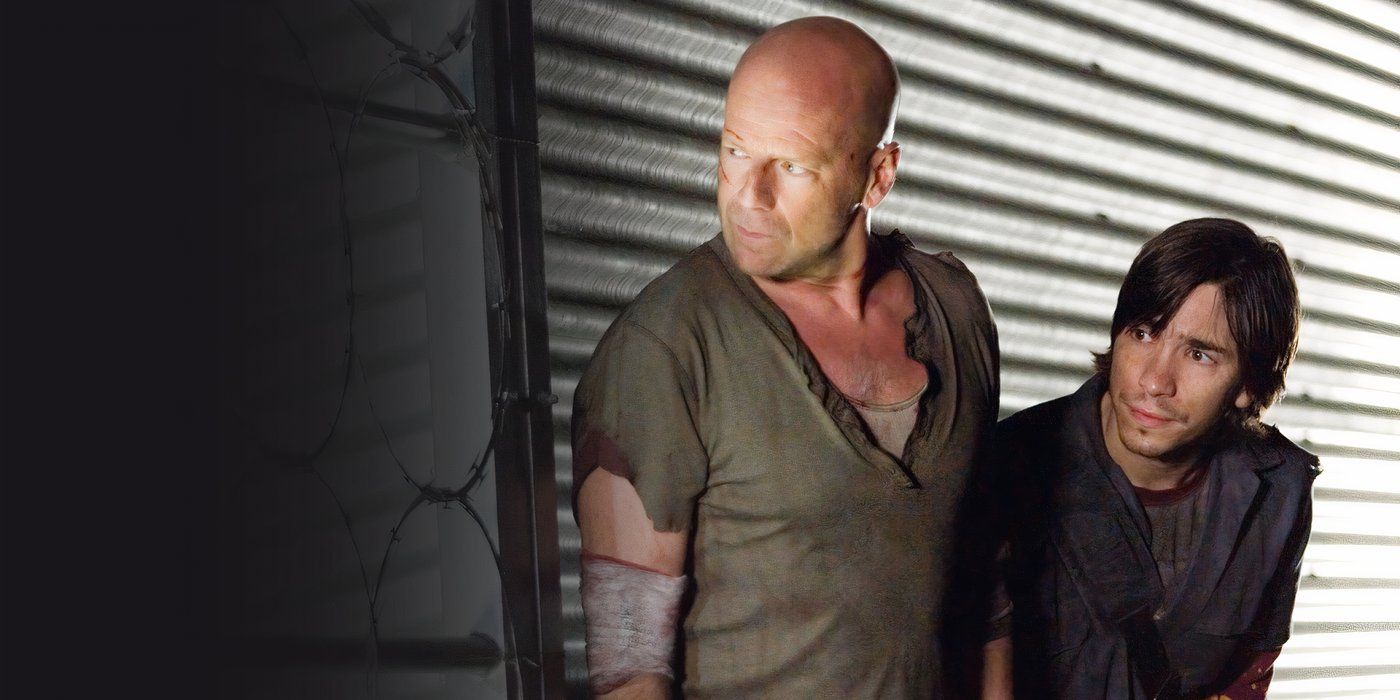
Fans would put John McClane in any conversation pertaining to all-time action heroes. What continued to make the Die Hard films so entertaining was John McClane's dedication to his job as the toughest, meanest, and most skilled cop in action movie history. Even when his fighting days seemed behind him, circumstances forced his hand.
In Live Free or Die Hard , John McClane is still a police officer now assigned to New Jersey. However, he gets pulled into a conspiracy that he is forced to solve. In A Good Day to Die Hard , John's estranged relationship with his family is more deeply explored. It's only when his son Jack gets stuck in an international prison that John takes up the call he was made for once again. While these final two Die Hard films might not be the best of the series, they gave fans more John McClane.
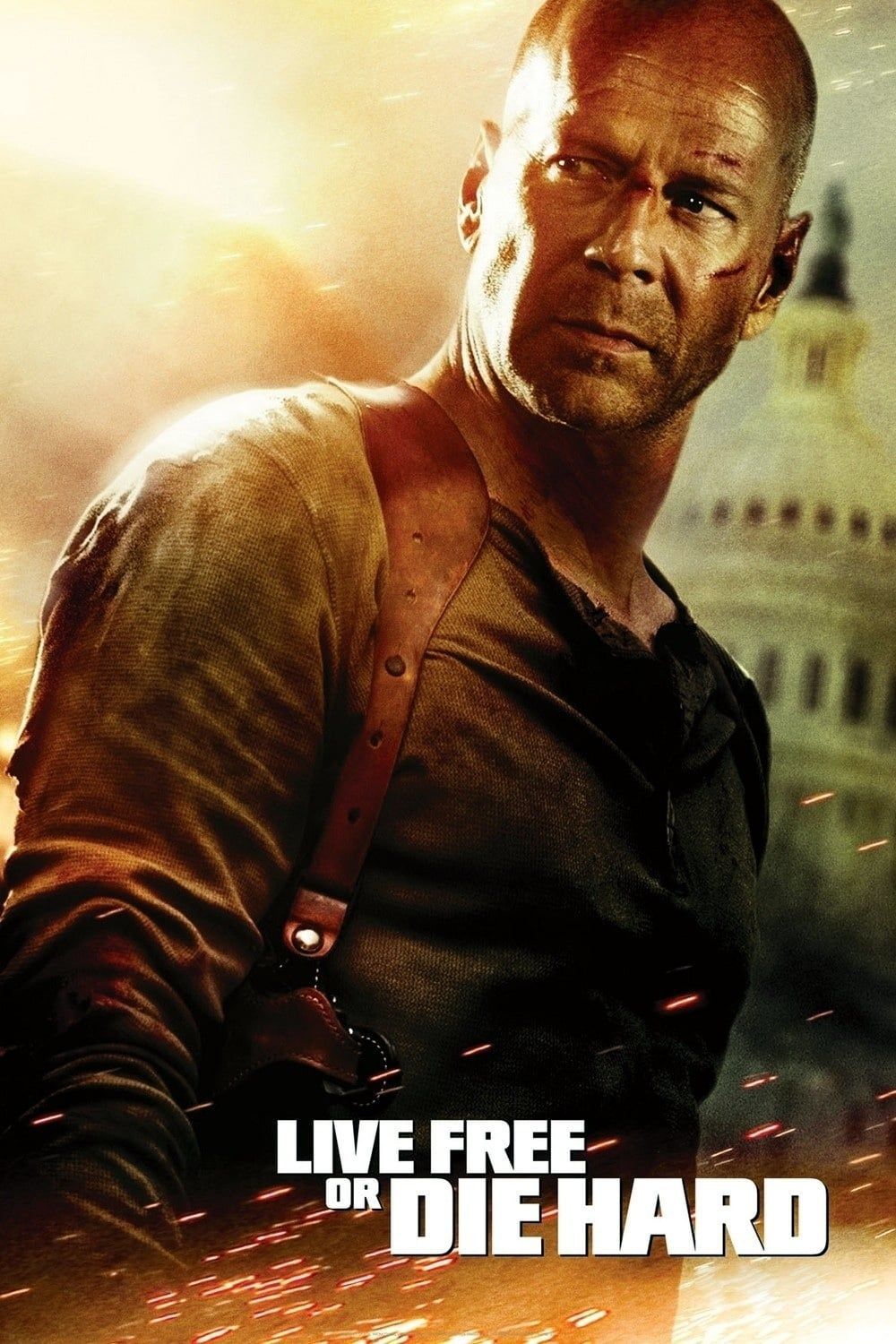
Live Free or Die Hard
8 barney ross and his friends will always have a job to do, the expendables (2010–2023).
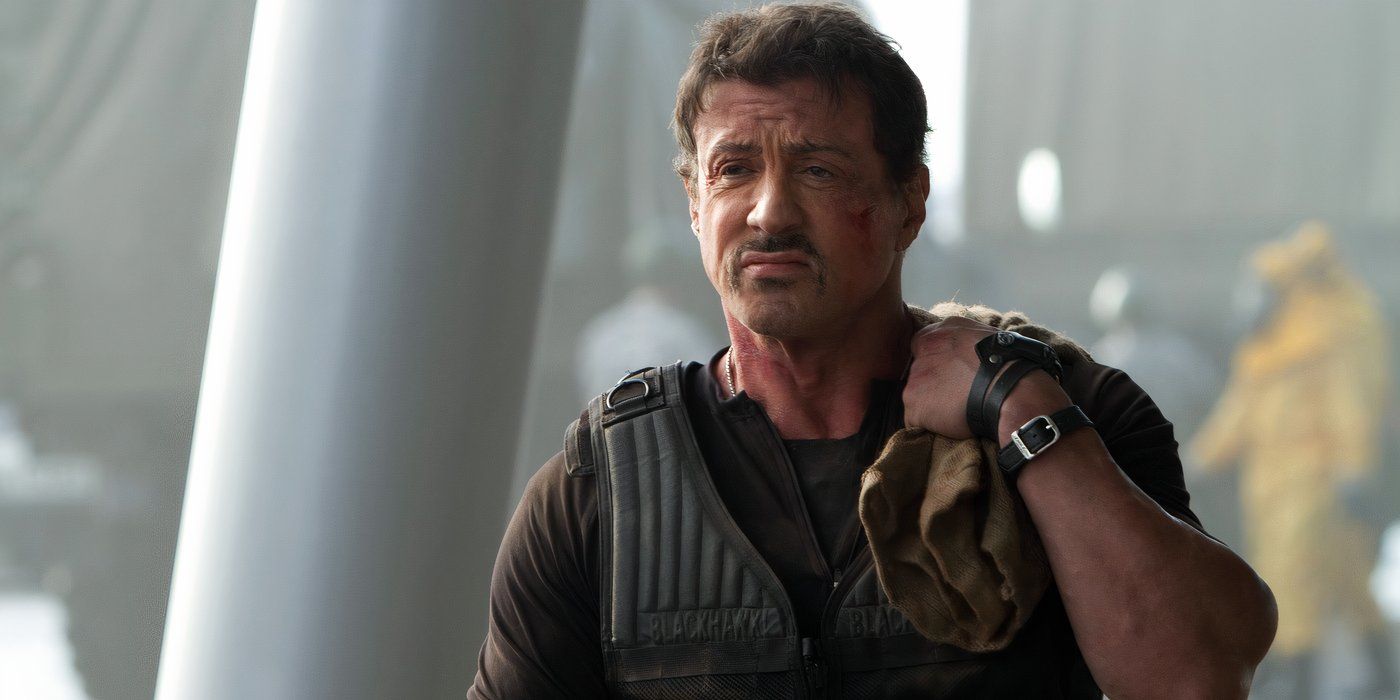
Of course, action fans know Sylvester Stallone's most famous action hero to be John Rambo. Rambo would be somewhere at the top of the list of the best action heroes of all time. However, in the 21st century, it is Barney Ross and his gang of expendables who continue to take new jobs for pay. While Barney Ross starts out only looking for money, his quest later turns into a deeper purpose for his morality
When audiences first meet Barney Ross, it is clear that his found family matters most to him. His friends, such as Lee Christmas and Gunner Jensen, are who he prioritizes over the job itself. If the job can't be done, he prefers not to put his people at risk. Barney continues to be a great action hero because when faced with good and evil, he always chooses what's right. Being incredibly skilled with a pistol is just the cherry on top of an entertaining action hero.
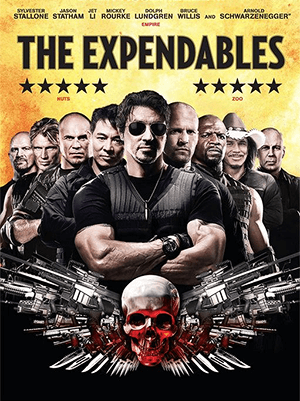
The Expendables
The Expendables is a must-see film for Sylvester Stallone fans. As both the director and starring actor, Stallone takes us through a journey into the past. In this 2010 film, a group of mercenaries head to the Gulf of Aden to rescue a group of hostages that were taken by pirates. While aboard, an incident takes place, which causes the group leader to discharge the team’s gunner. One of the mercenaries is collecting his next mission when he discovers that he’s tasked with the overthrow of dictator General Garza. The film unravels in a fast-paced and action-packed way, leading viewers down a long and complicated road.
As a 1 hour and 43-minute film, it’s about the standard length of competitive action films. Rated R, it isn’t suitable for all audiences. Lionsgate does a beautiful job of producing a seamless and well-executed film. With an $80 million dollar budget, Stallone was able to create a believable set for those of us who love to be captivated by fight scenes. But we especially love how this film pays homage to previous action films. With actors like Sylvester Stallone, Jason Statham, and Jet Li, this film has one of the best casts of all time. In fact, this film will likely become a classic because of the cast. Additionally, the embedded comedic elements provide a much-needed relief from action scenes.
The Expendables is fun to watch, easy to digest, and full of some of the genre’s most notable actors. If you’re looking for a memorable action film, this is it!
7 Bryan Mills Takes Evil Doings Very Personally
Taken (2008–2014).

Liam Neeson's "greatest father ever" character, Bryan Mills, certainly became a fan-favorite among audiences when Taken was released in 2008. For any young woman who had to witness what Kim Mills went through or for anyone who has personal experience with sex trafficking, watching Bryan Mills come to the rescue was gratifying. The disturbing truth behind Taken's themes is that not everyone has a father like Bryan Mills they can rely on in that situation.
After Bryan Mills said "I have a particular set of skills. Skills that make me a nightmare for someone like you," audiences quickly saw those words become true. Bryan Mills beating up the worst type of evil and single-handedly taking down an entire trafficking ring to get his daughter will always make him one of the best action heroes of the 21st century. This remains true even if the following two sequels weren't quite as enthralling as the original.
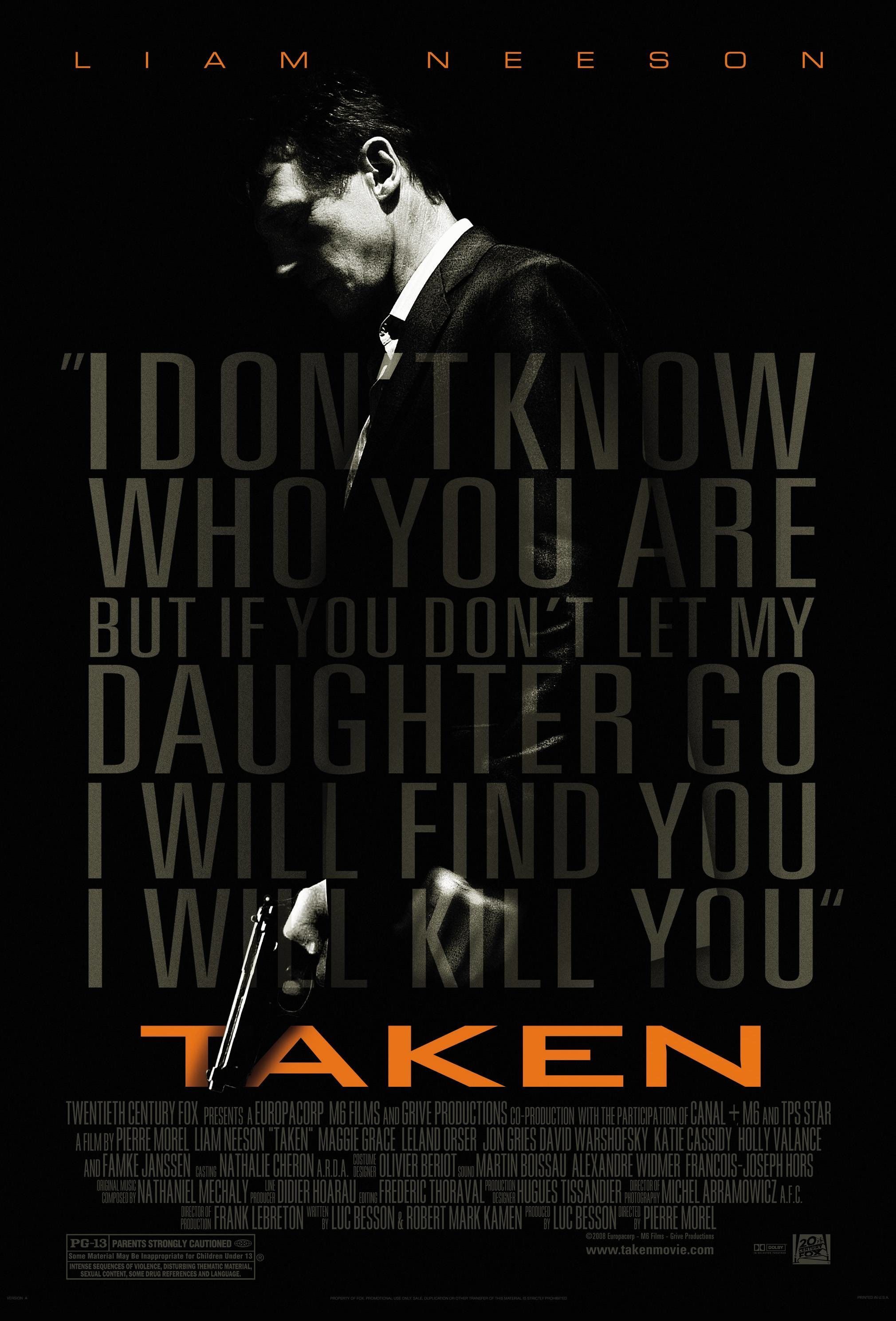
6 The Bride Is One of the Greatest Warriors in Action Cinema
Kill bill (2003–2004).
Never has revenge been so epic or satisfying as when "The Bride" gets her revenge against Bill. Fans knew she meant it when she said, "I'm gonna' Kill. Bill." Quentin Tarantino's Akira Kurosawa-inspired samurai revenge story — about a woman who survives a near-death experience and then seeks revenge on the people who did it — is one of the best action sagas in cinema. The biggest reason for this is "The Bride" doing what she does best.
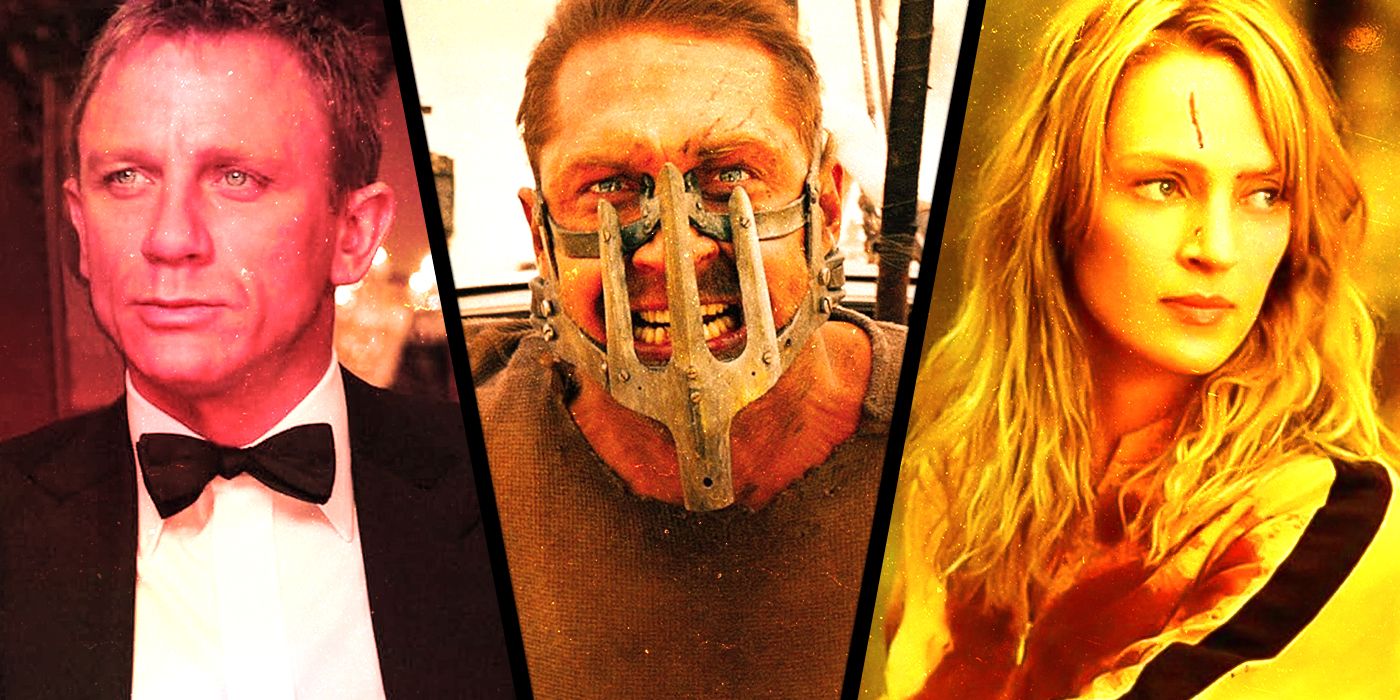
10 Best Action Movies Since 2000, Ranked
The action genre has dominated the film industry in the 21st century, spawning a long list of high-octane movies and franchises.
Skilled in hand-to-hand combat and swordplay, "The Bride" has a list of targets that she handles one by one. She overcomes every obstacle they place in her way. The motivation of revenge, which turns into protectiveness over her child, consistently makes "The Bride" one of the most empowering action heroes in cinema. With some of the most incredible action sequences, Kill Bill and Kill Bill: Vol. 2 portray one of the toughest and most skilled warriors in action cinema.
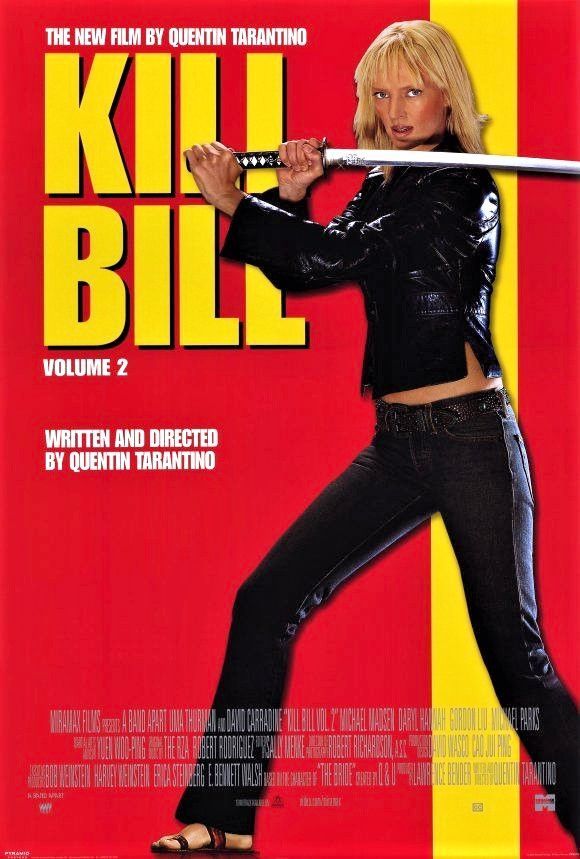
Kill Bill: Vol. 2
In the continuation of her relentless quest for vengeance, a former assassin tracks down the remaining members of the team that betrayed her. As she confronts her past, the narrative delves deeper into her complex relationship with her mentor and ex-lover, culminating in a dramatic confrontation that tests her limits of loyalty, love, and desire for revenge.
5 Frank Martin's Agility Is Almost Superhuman
The transporter (2002–2008).

Jason Statham has portrayed many action heroes , but none of them are as iconic as Frank Martin. Frank Martin was the first Jason Statham hero to express how agile and stylistically different a fighter Statham can portray. Furthermore, the concept surrounding Frank Martin is wholly original. With a clear set of rules and code in which he lives, Frank Martin is barely a hero until he is forced to become one.
There is often a lot of guilt and moral ambiguity that action heroes wrestle with, and Frank Martin is no different. When he breaks his own rules, a moral conflict erupts within him, forcing him to ultimately do what is right. Fighting for a better purpose, this heroic aspect of his nature becomes his personality as his adventures continue. Every time something must be done, Frank Martin is there as a formidable opponent for the bad guys. At the center of some of the greatest action sequences in cinema, Frank Martin gets the number five spot on the list.
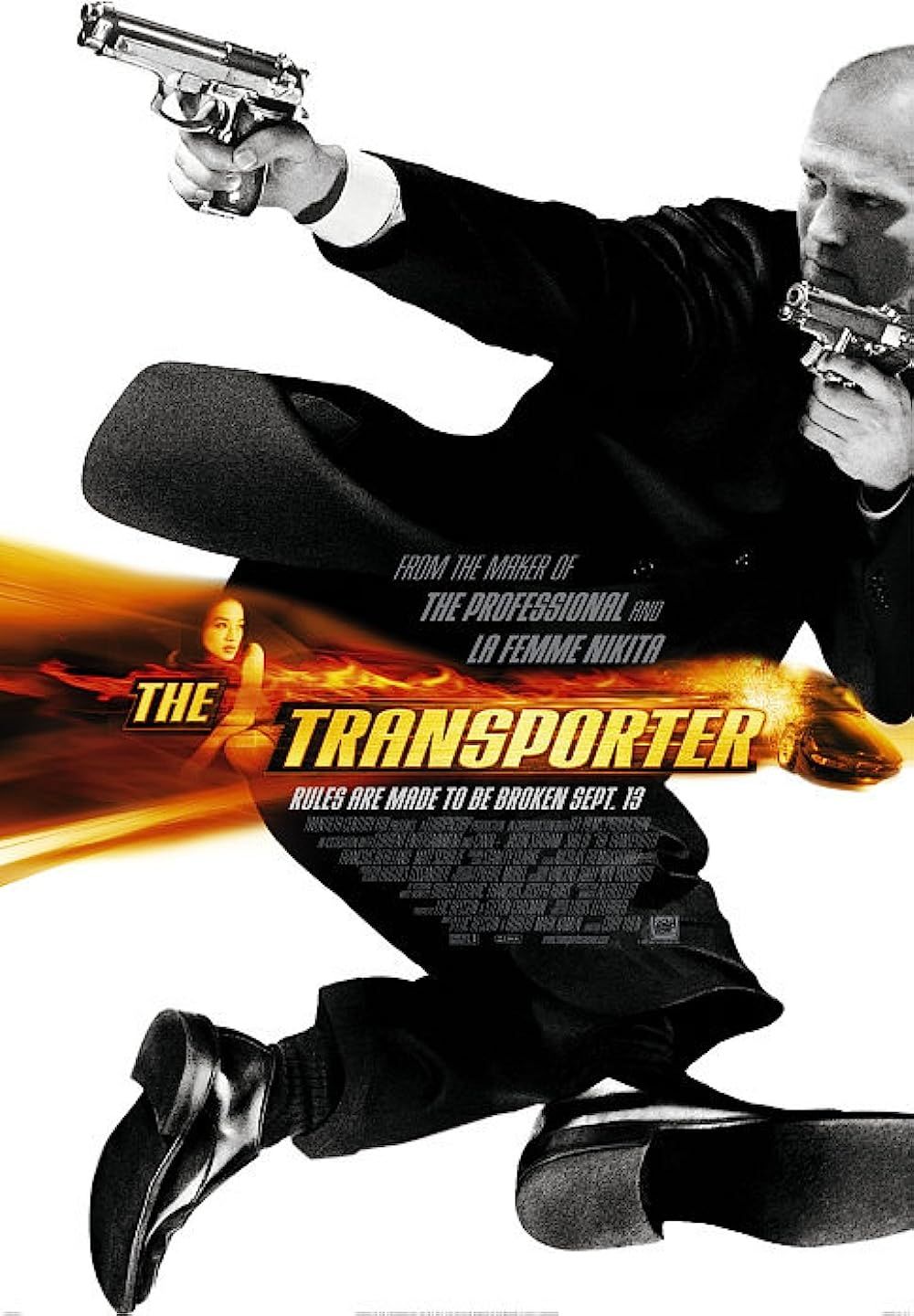
The Transporter
Frank Martin, who "transports" packages for unknown clients, is asked to move a package that soon begins moving, and complications arise.
4 James Bond Has Had One of His Best Runs This Century
007 (2006–2021).

While the character of James Bond isn't new to audiences, the most recent iteration, played by Daniel Craig, has had quality adventures over the past two decades. With some of the most inventive new storylines for the iconic character, James Bond has been one of the most consistent and entertaining action heroes in recent memory . Starting with Casino Royale and ending in epic fashion with No Time to Die , Bond was back with a vengeance.

Every James Bond Live-Action Actor, Ranked
James Bond is one of the most iconic characters in cinema history, so it comes as no surprise that several high-profile actors have played the role.
Daniel Craig's bond is explored in greater depth, giving him a full character arc from a young skilled warrior to an aging man no longer in his prime. Craig's performance made James Bond iconic once more as he took up the calling during large conflicts. His skills with guns and hand-to-hand combat, always made him a tough and worthy hero for any villain thinking of disrupting the status quo. The great James Bond couldn't possibly have been any lower on the list.
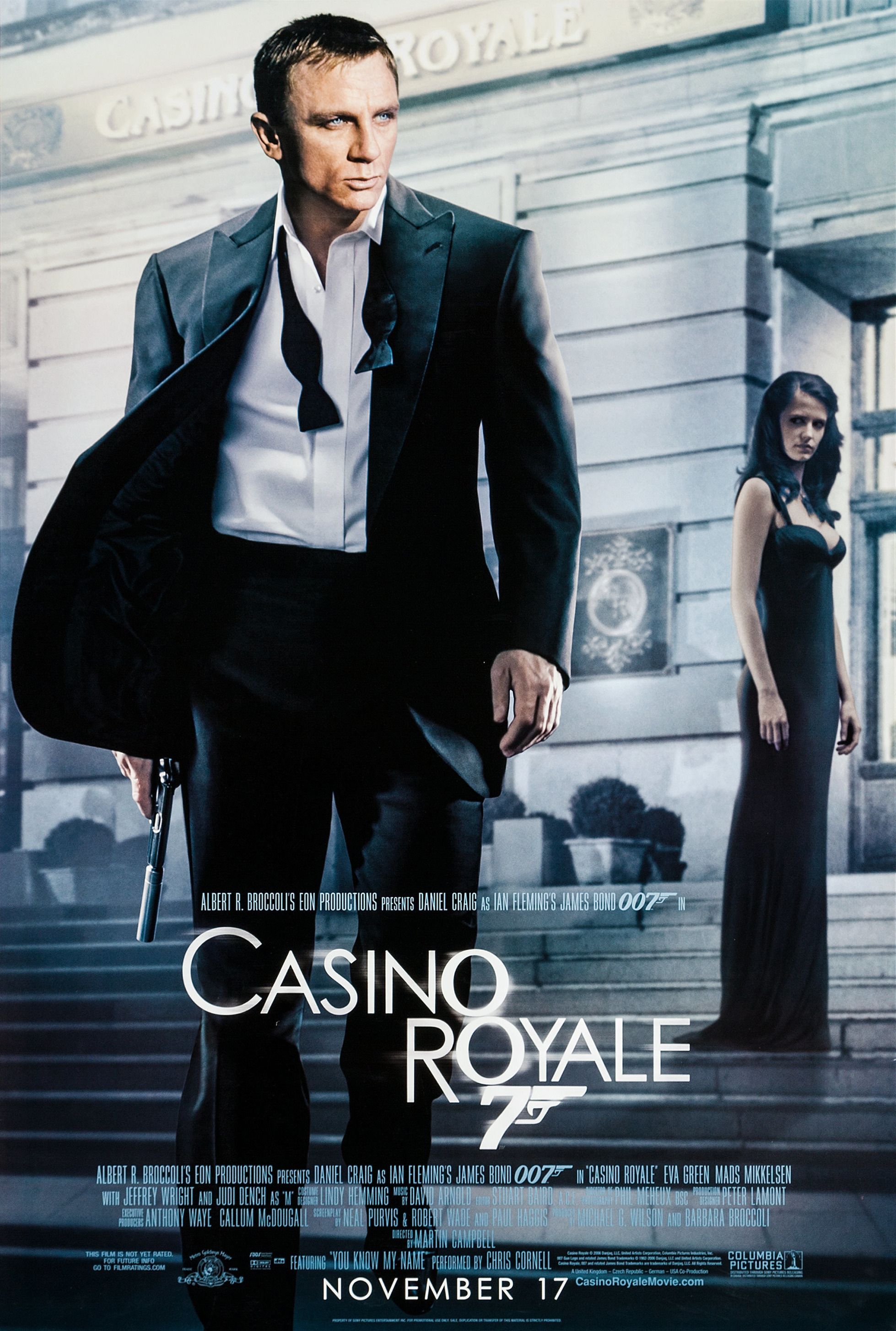
Casino Royale
3 jason bourne gave audiences something different to relate to, bourne (2002–2016).
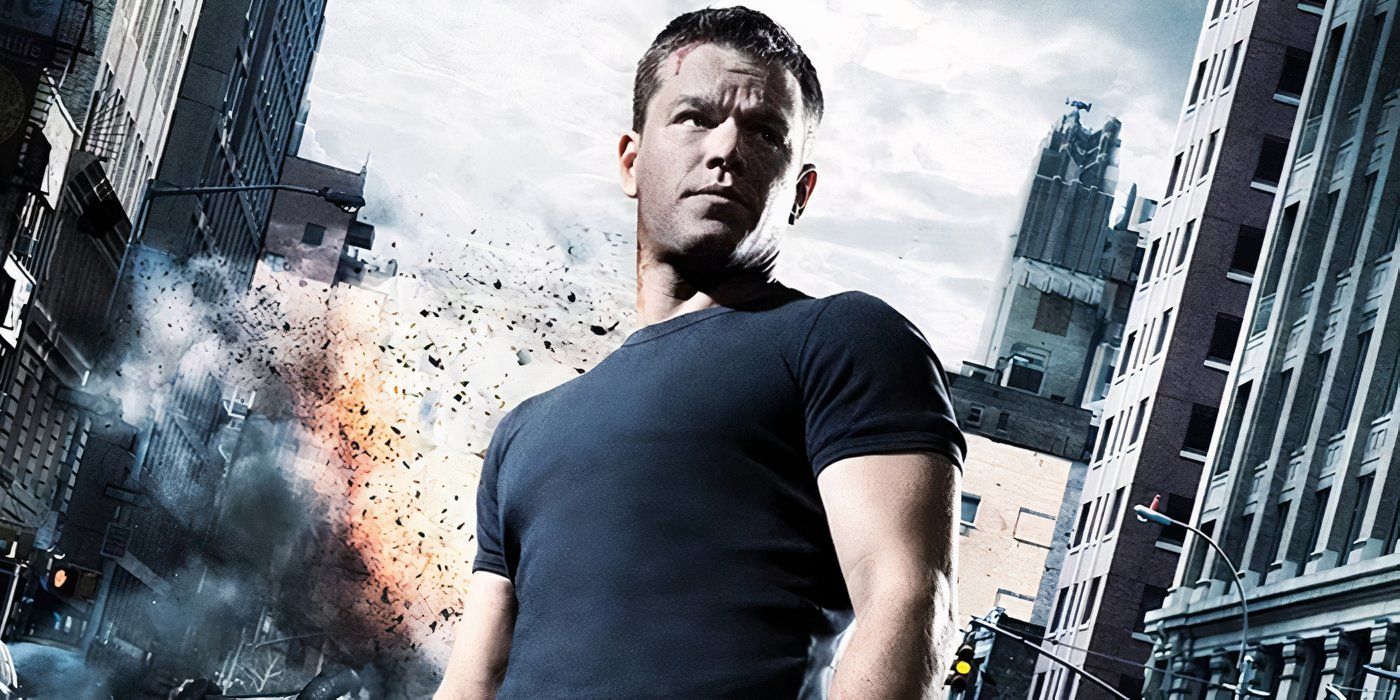
Amnesia is not a condition to be taken lightly. When Jason Bourne finds himself dealing with it, his journey to find himself again becomes complicated and interesting. The Bourne films pose the idea of what it would be like if someone who didn't know who they were found out they were a skilled assassin.
It's a deeply compelling journey for the action hero Jason Bourne, to not only discover who he is but what his newfound purpose will become. As the people who helped create him continue to disrupt his life, he takes up the calling again and again and manages to fight back. Whether for discovery, revenge or survival, Jason Bourne's skills are matched by few others as he continues to fight against oppressive systems. Over the course of four films, he makes enemies shiver with fear when they find out about his involvement. He will always be in the top five when discussing action heroes.
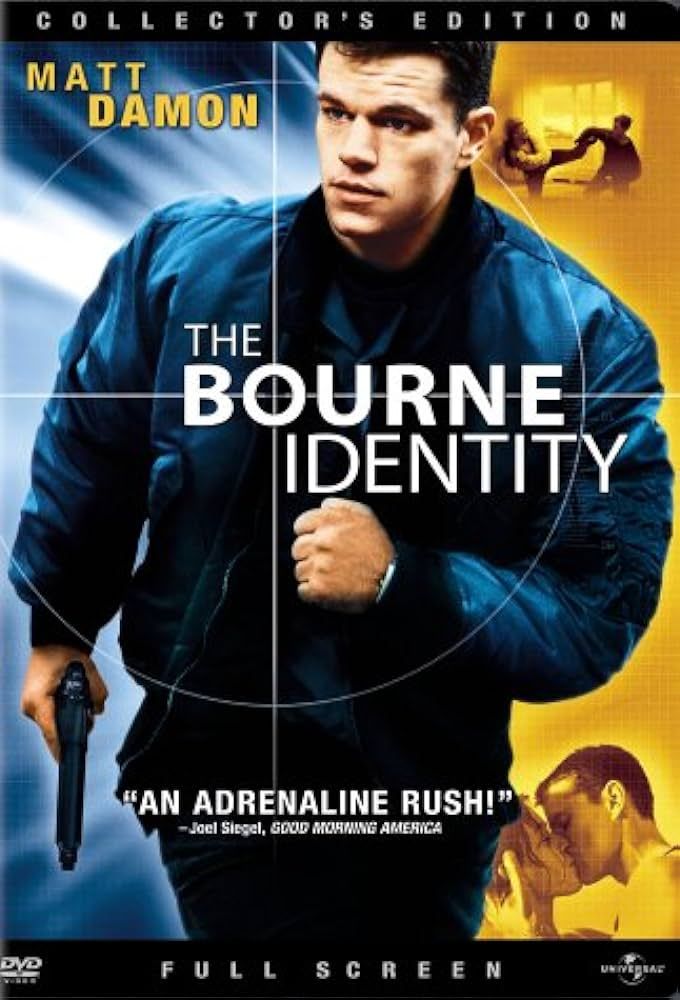
The Bourne Identity
A man is picked up by a fishing boat, bullet-riddled and suffering from amnesia, before racing to elude assassins and attempting to regain his memory.
2 Ethan Hunt Is the Longest-Running Action Hero
Mission: impossible (1996 - ongoing).
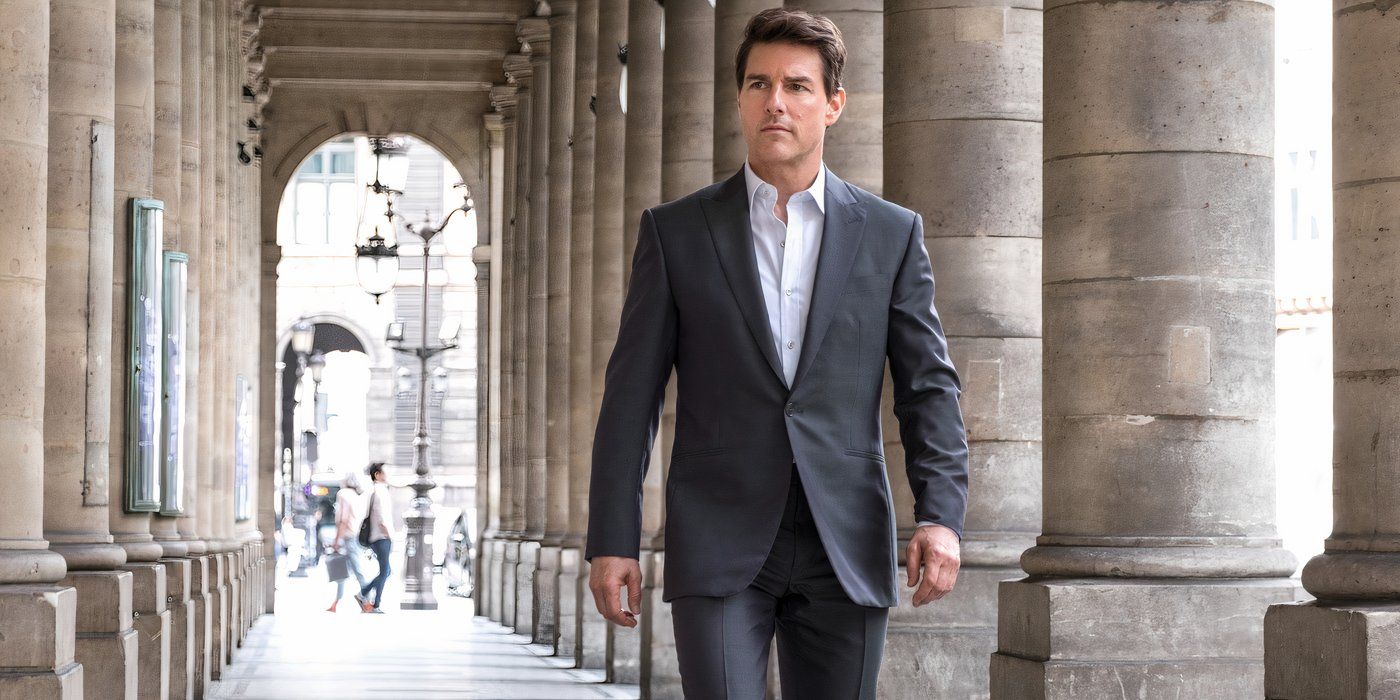
It's not just because the storylines and stakes get heavier with each movie and that the series somehow manages to get better with each sequel that Mission: Impossible is one of the best action franchises ever. Another big reason is its hero. Tom Cruise has continued to develop the character of Ethan Hunt for the last twenty-eight years. As the longest-running action hero, fans have seen Ethan Hunt's arc evolve and change with each new crisis he must avert.
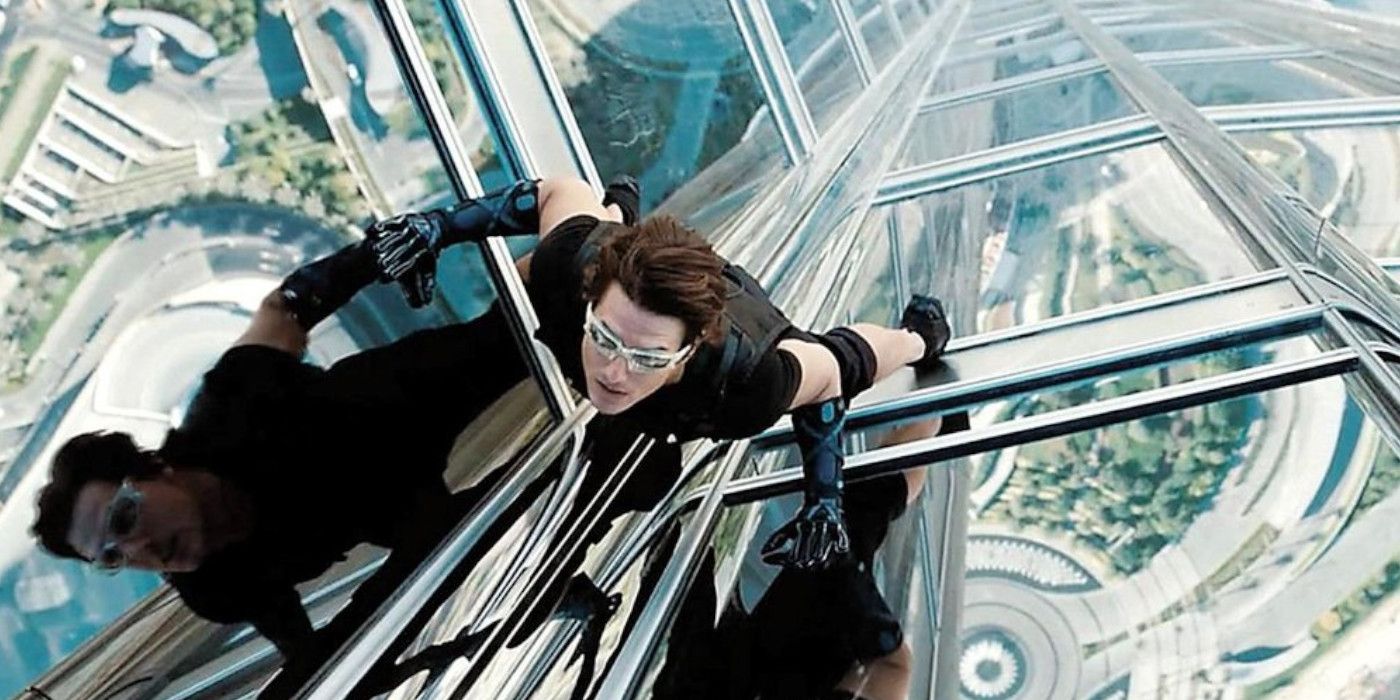
How to Watch the Mission: Impossible Movies in Order
The Mission: Impossible films are some of the most popular action flicks of all time, and their watch order is a vital part of their experience.
While every central conflict of a Mission: Impossible movie ups the stakes, somehow becoming more impossible than the last one, Ethan Hunt bravely continues to face challenges head-on. Proving that no mission is ever too impossible for him and his team, Ethan Hunt always finds that one way to win the day.
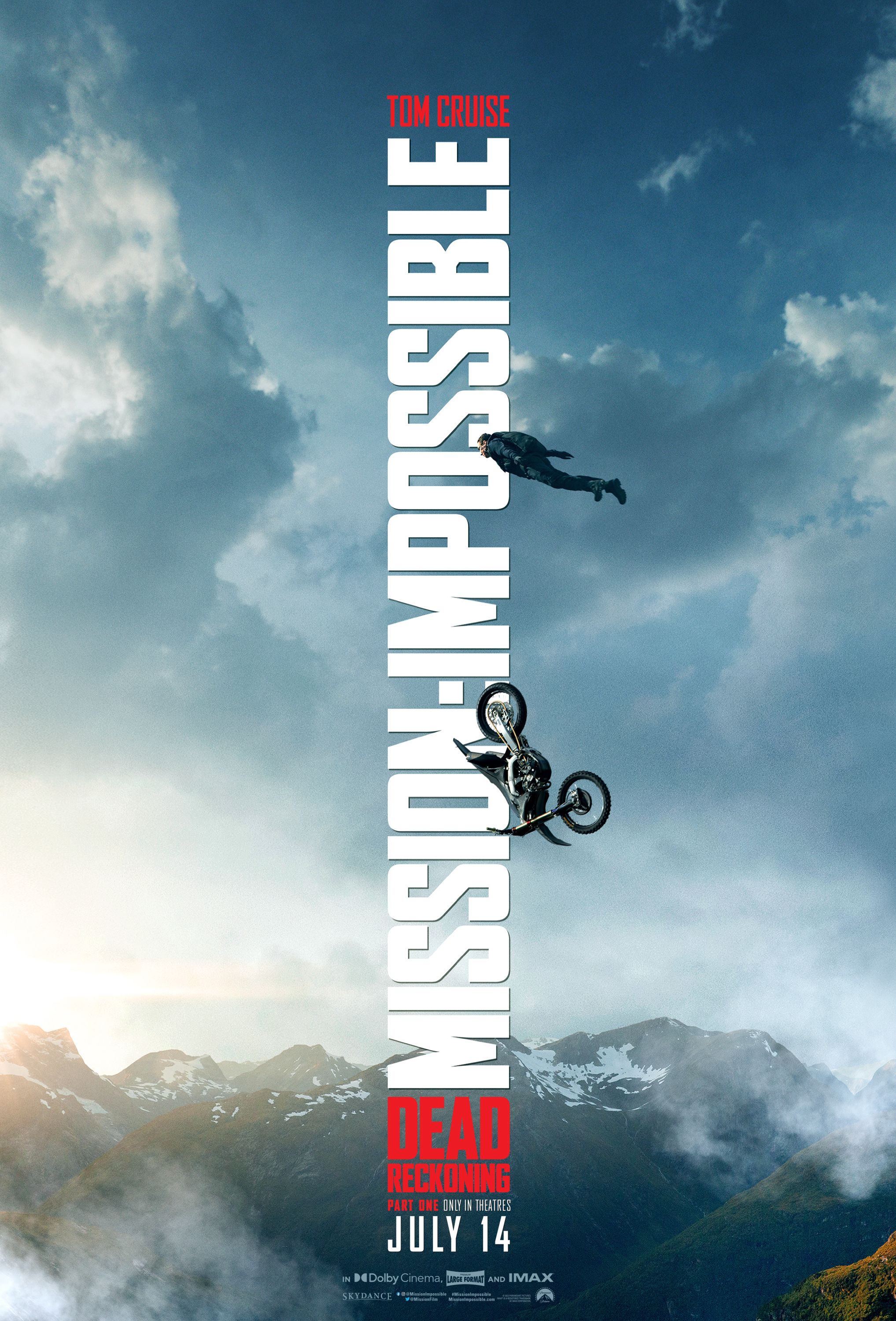
Mission Impossible
Mission: Impossible is a series of American action spy films, based on the 1966 TV series created by Bruce Geller. The series is mainly produced by and stars Tom Cruise, who plays Ethan Hunt, an agent of the Impossible Missions Force.
1 John Wick Brought a Style Like No Other to Action Cinema
John wick (2014 - ongoing).
John Wick stands out from other action heroes because the reason he went to war with the deadliest organizations was because one of them killed his puppy. The themes have been a consistent stylistic decision that sucks audiences back in. Of course, what John's dog symbolized was the real reason for his vendetta, but the decision had lasting consequences for four films. With some of cinema's best fight choreography , John Wick immediately stood out.
Furthermore, the lore and style of the John Wick universe is more unique than any other. J ohn Wick himself is a force like no other, able to withstand any blow and attack any enemy. His suit and skills with almost any weapon have continued to make him one of the most entertaining and instantly iconic action heroes in cinema. His arc is a constant whirlwind of chaos that continues even when fans expect otherwise. With each outing, the legend of John Wick grows beyond any other character, which is why he is the best action hero of the 21st century.
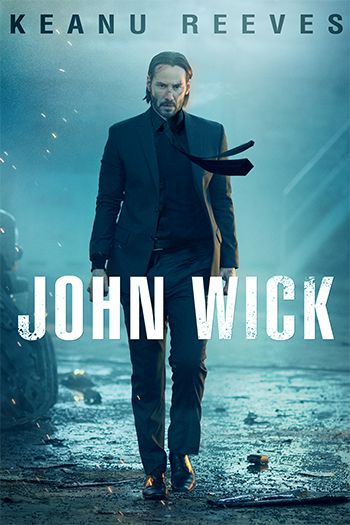
Dive into the world of a retired hitman pulled back into the brutal underworld he left behind, igniting a relentless crusade for revenge.

IMAGES
VIDEO
COMMENTS
Essay type: Pages: Download. Carol Dweck, in an article entitled "Who Will the 21st-Century Learners Be? " discusses the characteristics of 21st-century students, their attitude towards learning as well as their hierarchy of values . She based her conclusions on AASL document describing appropriate standards for learners of 21st century.
It helps students learn how to learn. In a world where information is constantly changing, students need to be able to learn new things quickly and effectively. 21st-century learning helps students develop the metacognitive skills they need to be lifelong learners. 4. It helps students develop a love of learning.
Abstract. The term '21st century learner' emerged at the turn of the millennium and evoked a certain type of digitally-agile and self-driven learner. These ideas about 21st century learners ...
The 21st-century skillset is generally understood to encompass a range of competencies, including critical thinking, problem solving, creativity, meta-cognition, communication, digital and technological literacy, civic responsibility, and global awareness (for a review of frameworks, see Dede, 2010).And nowhere is the development of such competencies more important than in developing country ...
By Marc Prensky. Published in. From Digital Natives to Digital Wisdom: Hopeful Essays for 21st Century Education (Corwin 2012) I have a vision for education (and, of course, so do lots of folks ). But my vision differs from most people's in one very significant respect: My vision is bottom-up—it begins with the students—what they need and ...
iStock/Getty. The term "21st-century skills" is generally used to refer to certain core competencies such as collaboration, digital literacy, critical thinking, and problem-solving that ...
The ability to self-govern is at the heart of twenty-first century learning. Self-directed learners take personal responsibility for their learning and are willing to improve their capabilities throughout their careers. Herring (2012) argues that self-directed learners are intrinsically motivated.
The 21st-century student populations are more heterogeneous than in the past, which means schools need to become more responsive to diverse cultures, languages, experiences, economics, and interests—and do this in ways that provide equity of access to dynamic learning experiences to meet the needs of all learners.
These jobs will require the types of problem solving and communication skills that can only be learned through 21st Century approaches to learning. 7 Key Features of 21st Century Education are: Personalized learning. Equity, diversity and inclusivity. Learning through doing. Changed role of the teacher.
Argument: 21st century learners need to cultivate a diverse range of skills that extend beyond academics, including digital literacy, adaptability, and a willingness to embrace lifelong learning. Challenges and Opportunities. While the 21st century presents learners with immense opportunities, it also brings forth unique challenges. The rapid ...
Classrooms with 21st Century learning environments are well‐equipped with computer hardware, software, electronic whiteboards and rich digital and online curricular resources. When you enter a 21st Century learning environment, you quickly see that interactive learning, higher level thinking skills, and student engagement are pervasive ...
15 Characteristics of a 21st-Century Teacher. 1. Learner-centered classroom and personalized instruction: As students have access to any information possible, there certainly is no need to spoon-feed them knowledge or teach one-size-fits-all content. Students have different personalities, goals, and needs, and offering personalized instruction ...
Global Education Education systems need alignment for teaching and learning 21st century skills Helyn Kim, Esther Care, Alvin Vista January 30, 2019 Challenges in integrating 21st century skills ...
Accelerating 21st Century Learning. There are four ways to expand access to 21st century learning to help more young people thrive—both now and as adults. More projects: integrated, community ...
The introduction [PDF] of Teaching and Learning in the 21st Century, which describes the rationale for the book's comparative study; Fifteen Letters on Education in Singapore, in which U.S. educators visit Singapore to learn how that country's education innovations have fueled a prosperous knowledge economy — and what lessons may apply.
Most of them are universal and can benefit various aspects of your life. However, others can be applied to specific spheres like business, politics, or science. Here is the extended list of top 21st-century skills. Cultural literacy. Global awareness. Creative thinking. Adaptability. Presentation skills. Curiosity.
And, in all schools -- deeper learning driven or not -- literacy is a curriculum fundamental. Its importance President Obama explained in a speech a few years back: In today's world, being literate requires much, much more than the traditional literacy of yesterday. According to the NCTE (National Council of Teachers of English), twenty-first ...
New! Collaboration, critical thinking, communication, and creativity are the 4 Cs of a 21st-century learner, according to the Partnership for 21st Century Learning. Given that technology use continues to expand in schools, it's worthwhile to think of how that technology can function in assignments designed to develop the skills our students need.
For the final deliverable, you decide to ask students to give a presentation where they can practice their verbal communication skills for the class, thus addressing the 21st-century skills of communication (verbal and written), collaboration (working with teammates), and media literacy (using technology to find information).
21st-century skills for students. An analysis of 213 studies showed that students who received SEL instruction had achievement scores that averaged 11 percentile points higher than those who did not. And SEL potentially leads to long-term benefits such as higher rates of employment and educational fulfillment.
The curriculum also encourages more project-based learning, where learners engage in hands-on activities that require problem-solving and collaboration-both key 21st-century skills. The private sector and non-governmental organizations (NGOs) have also played a significant role in supporting learner's transition to the digital age.
21st Century Community Learning Centers is a federally-funded program which supports the creation of community learning centers that operate programs for students, particularly those who attend high-poverty and low-performing schools, and their families. ... Serve legal papers; Verify a licensed professional; File an appeal to the Commissioner ...
10 Gary "Eggsy" Unwin Is a Fast-Learning Spy Kingsman (2014 - Ongoing) ... taking down an entire trafficking ring to get his daughter will always make him one of the best action heroes of the 21st century. This remains true even if the following two sequels weren't quite as enthralling as the original. Taken PG-13. Thriller. Action.